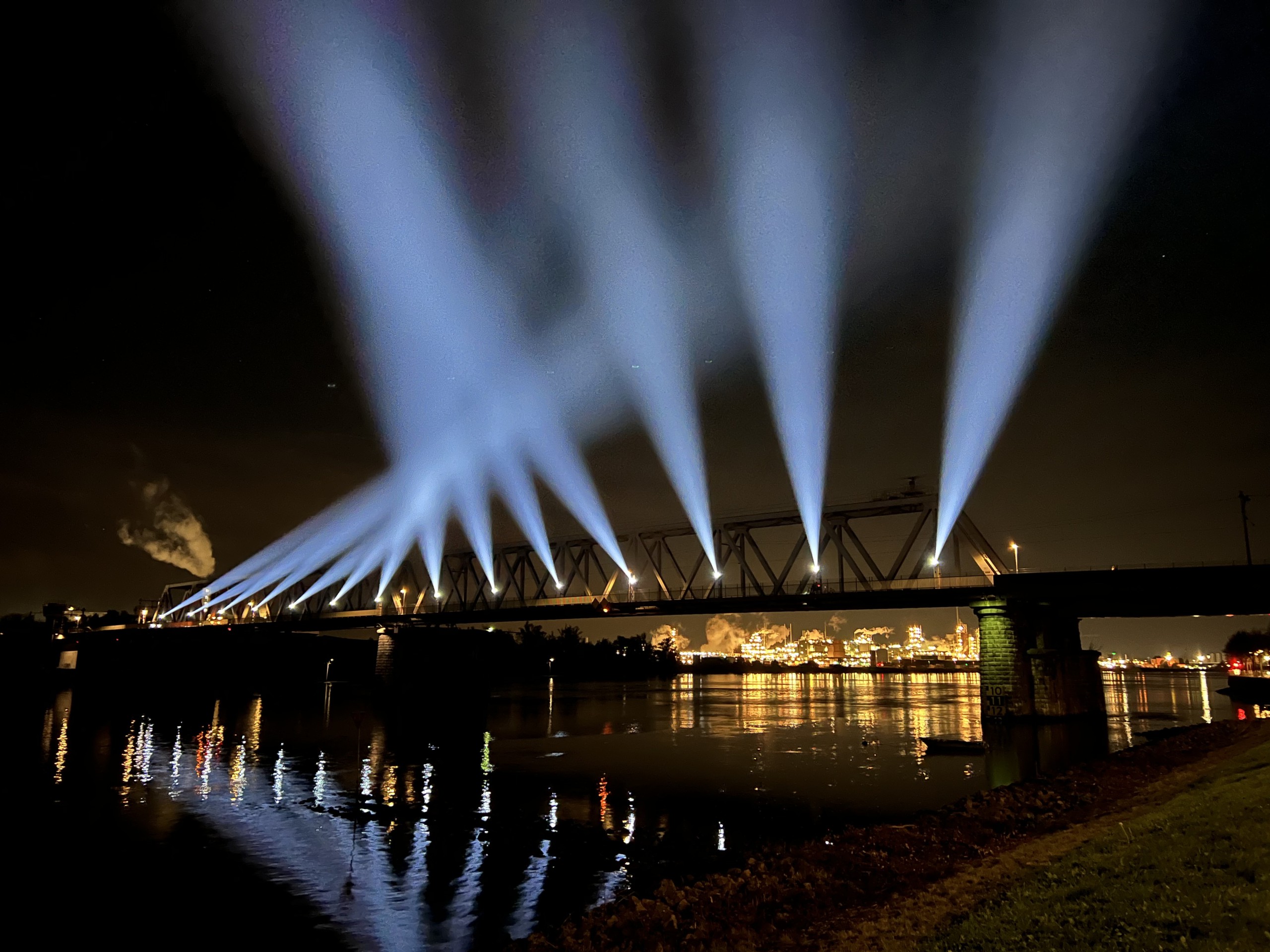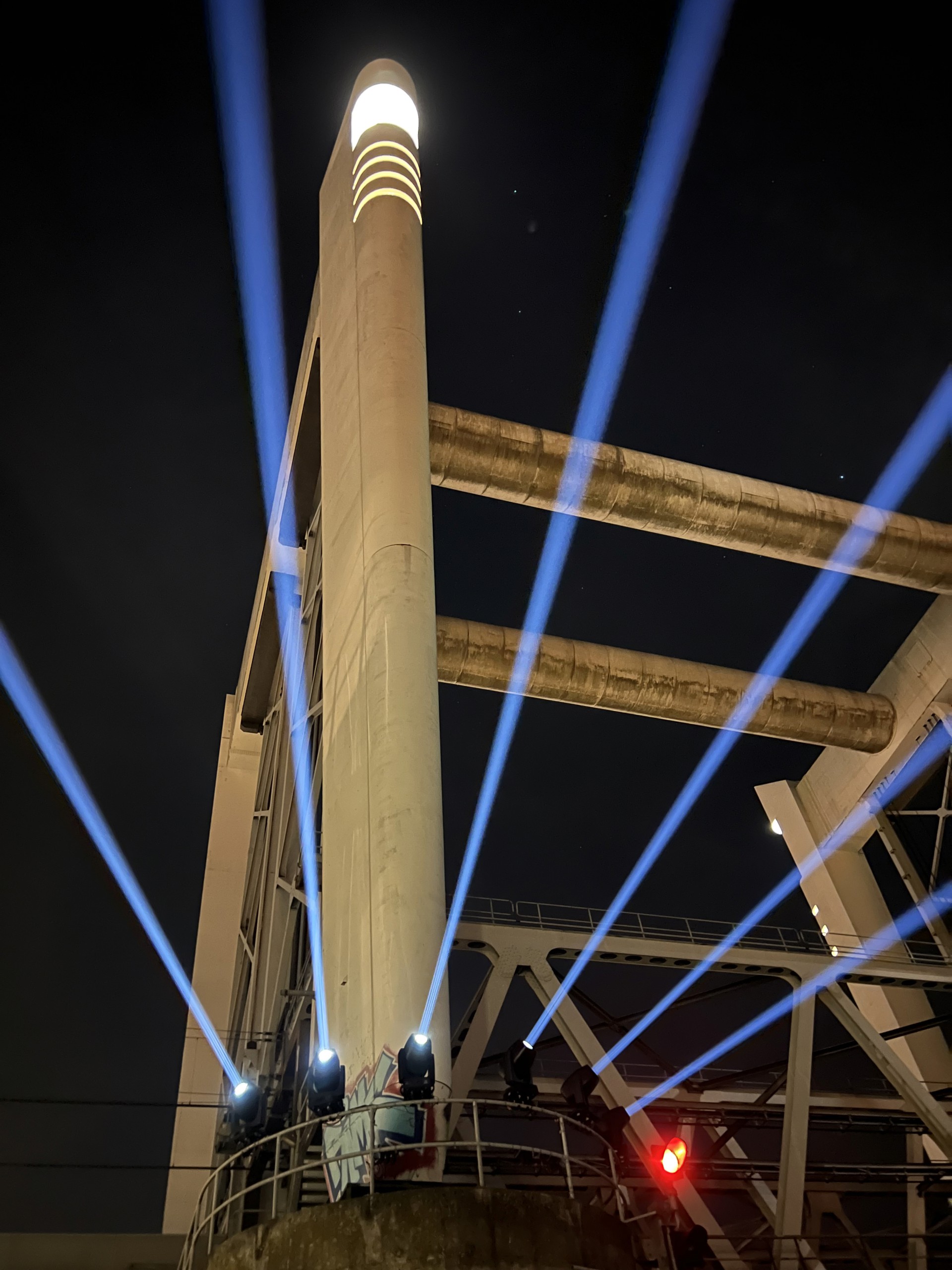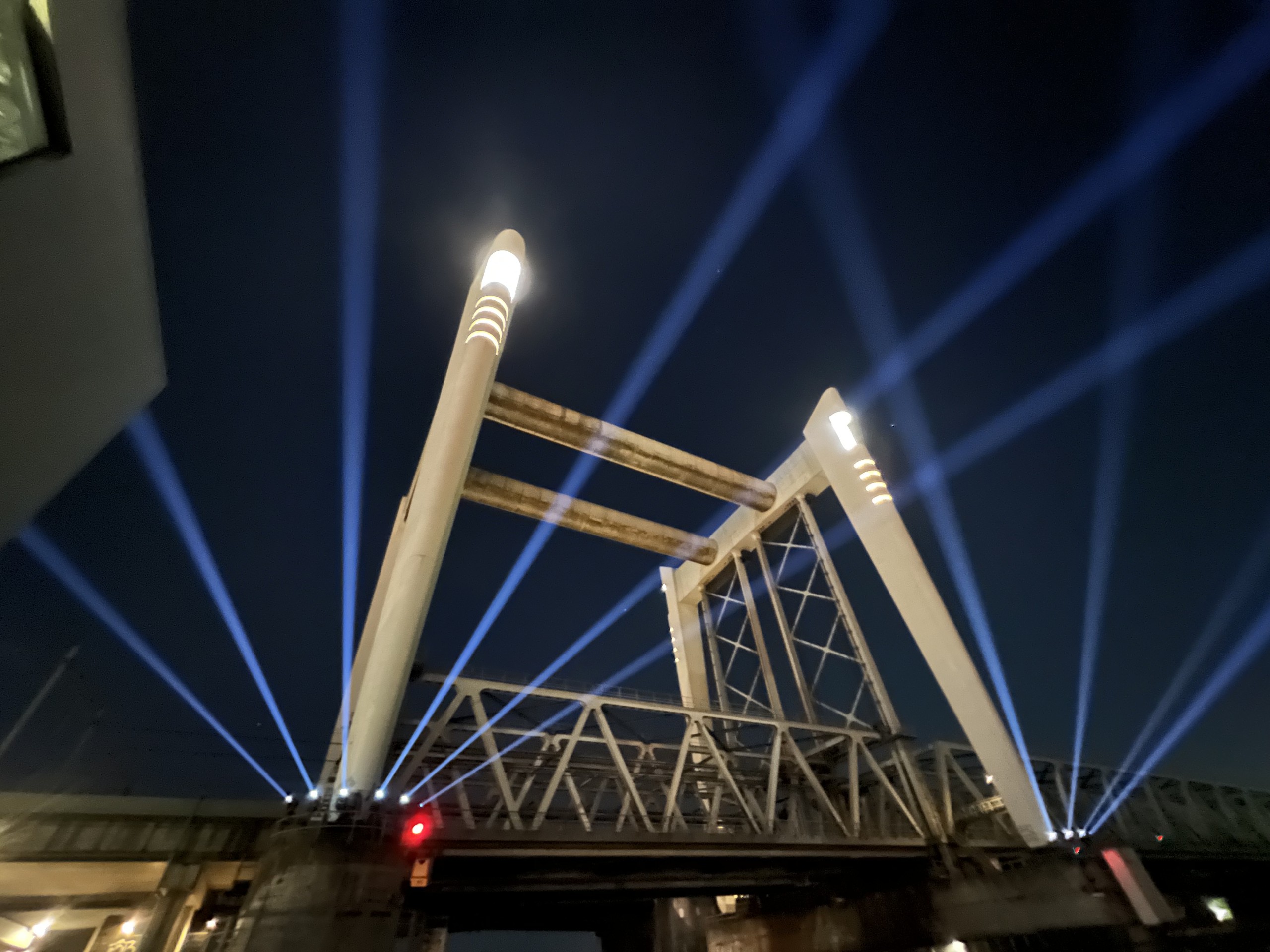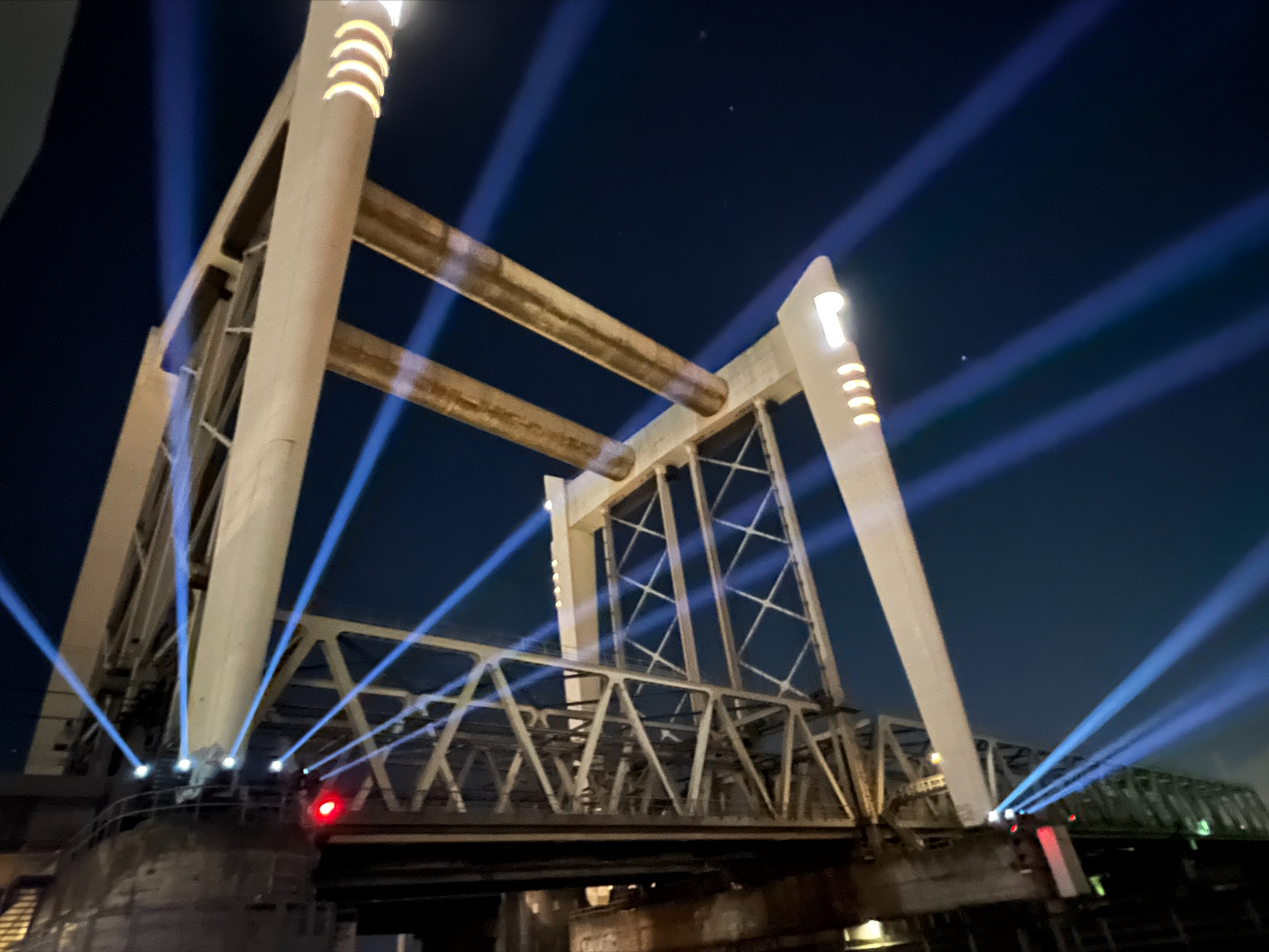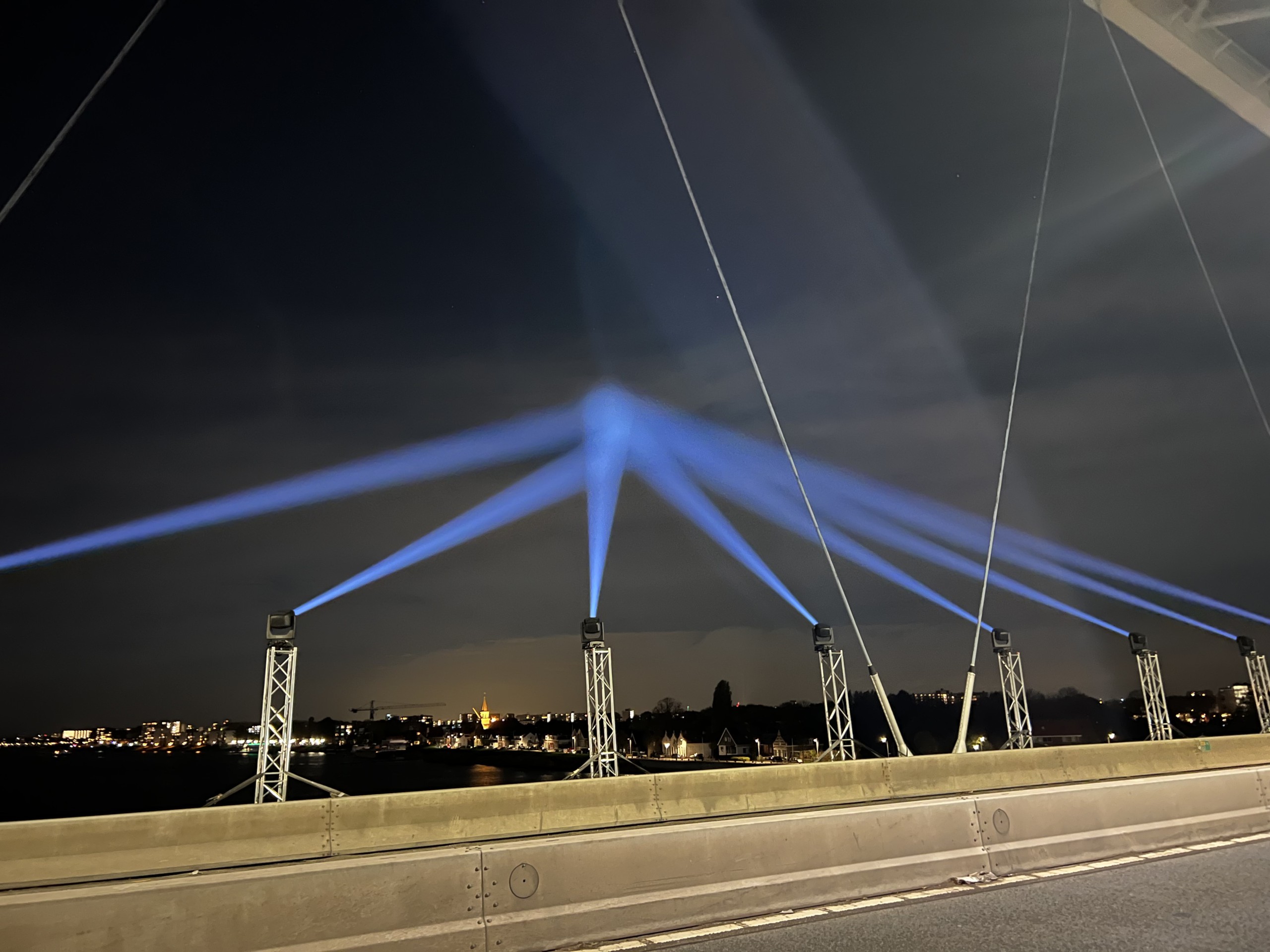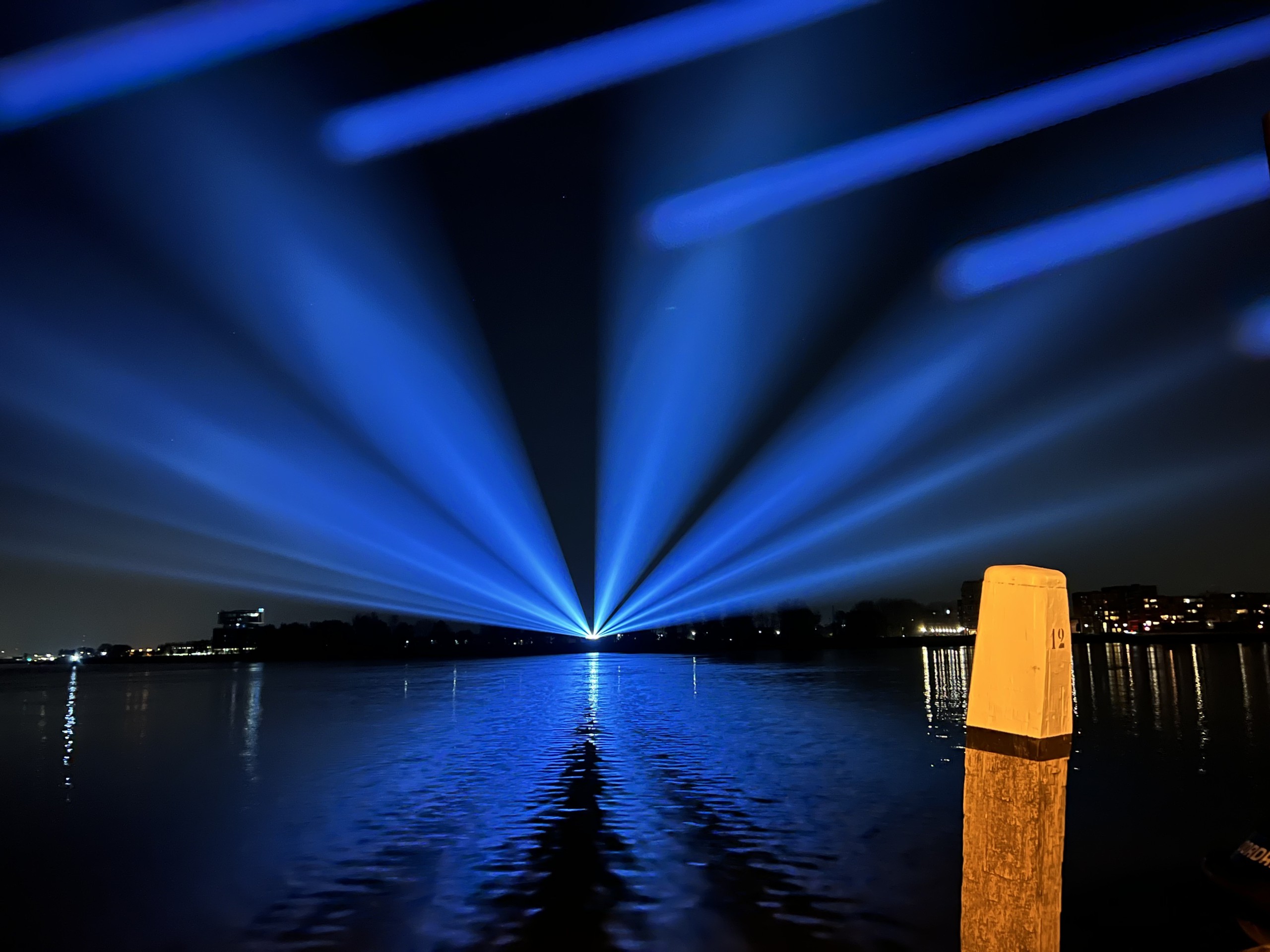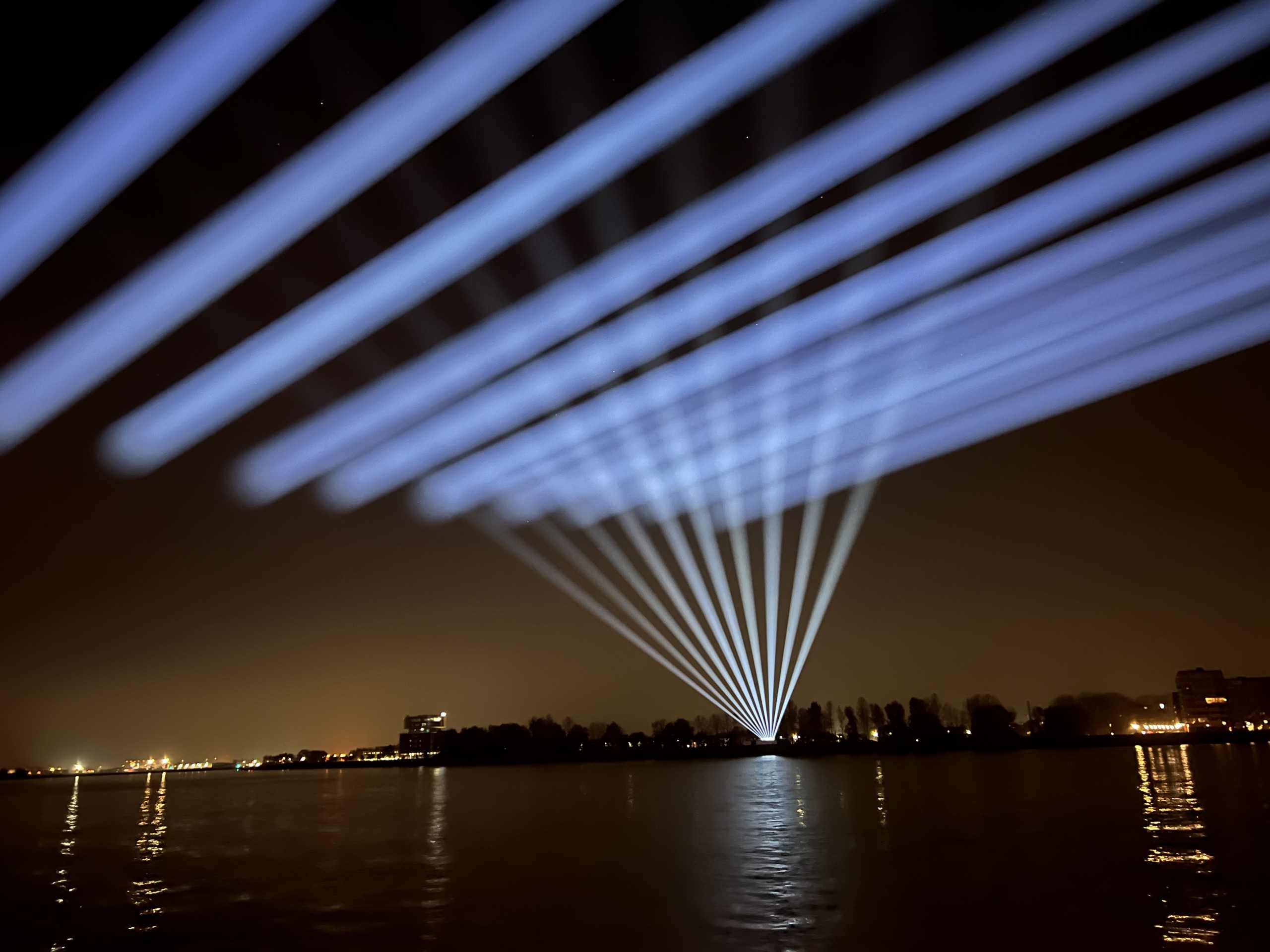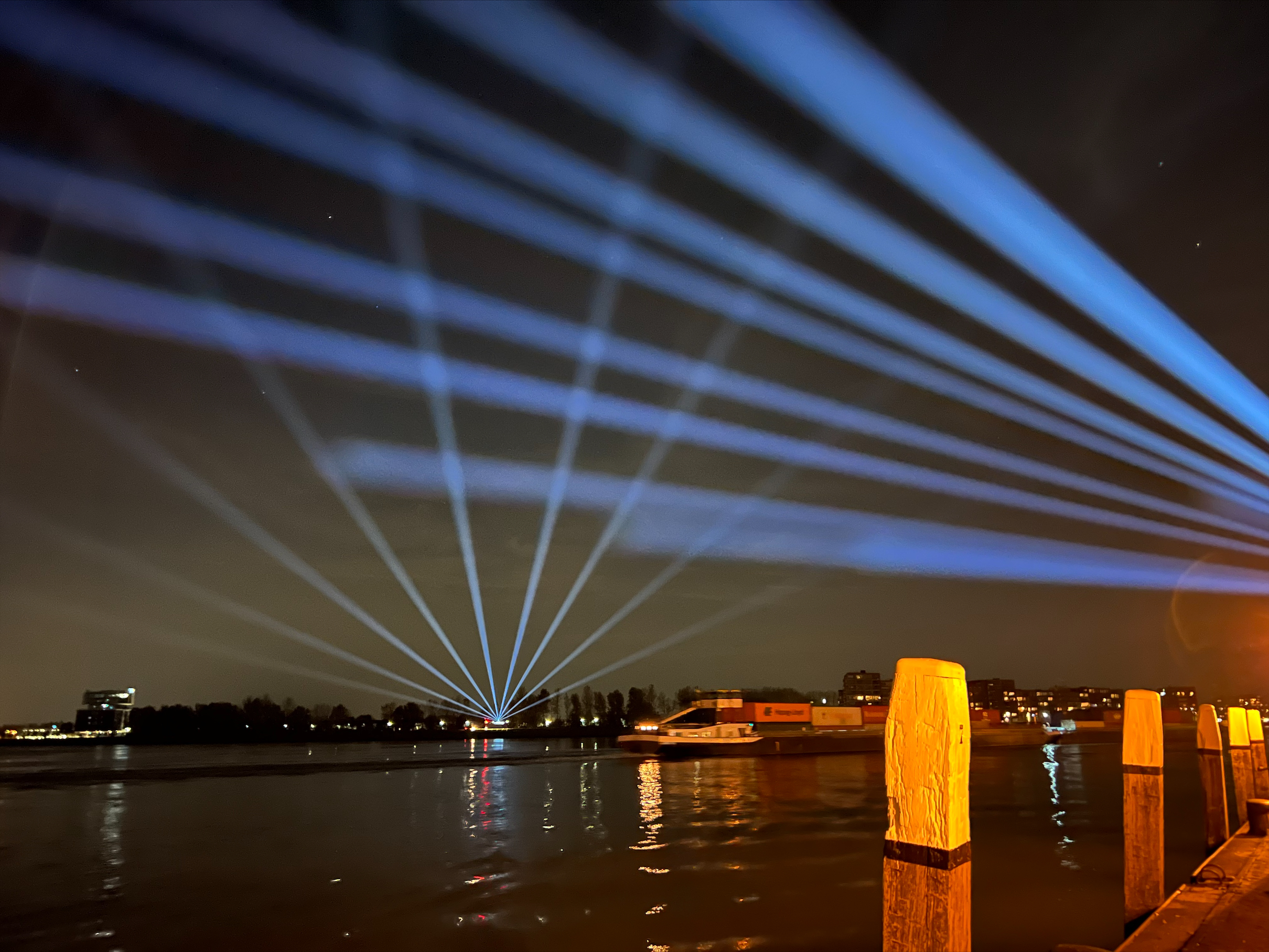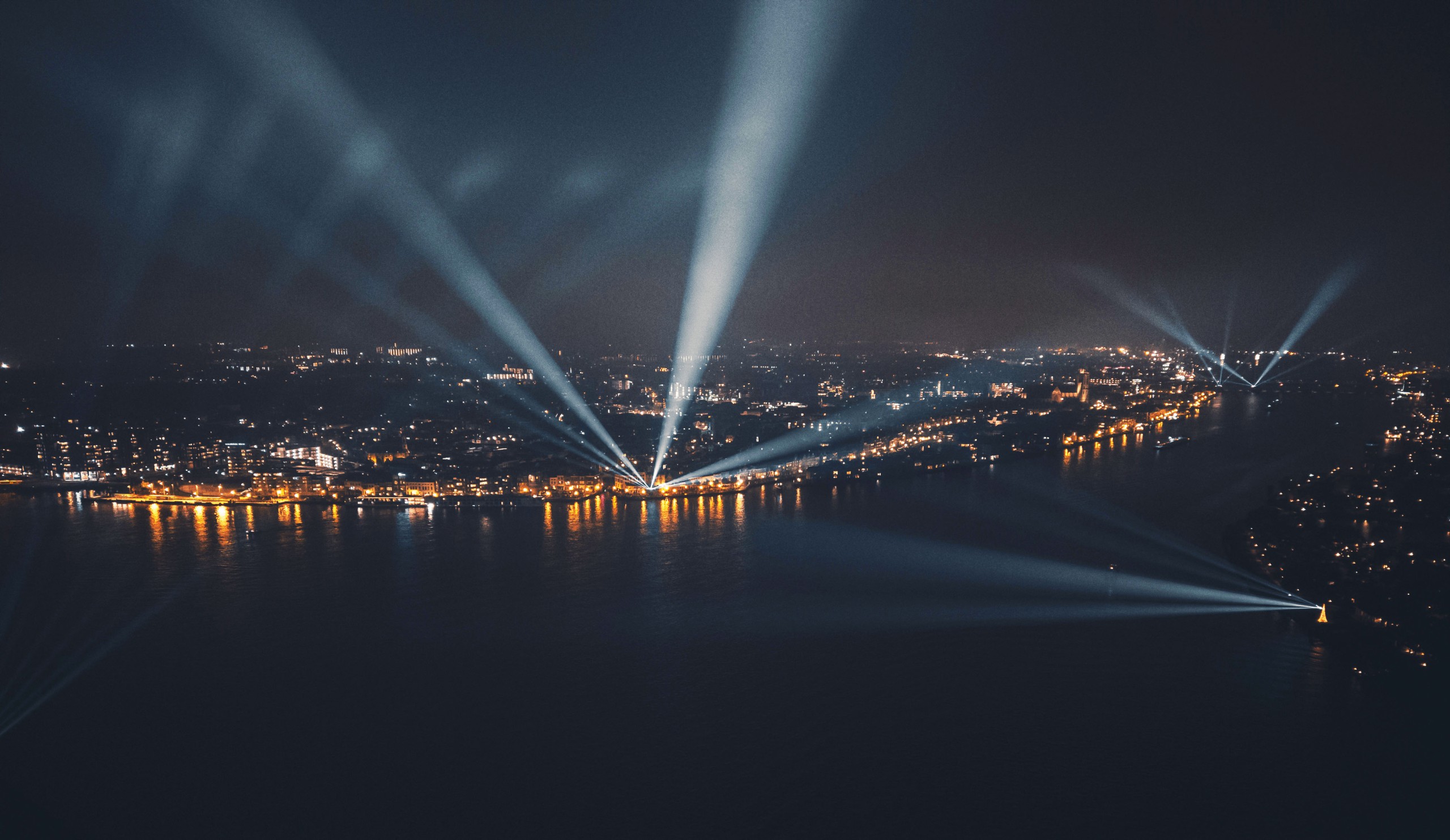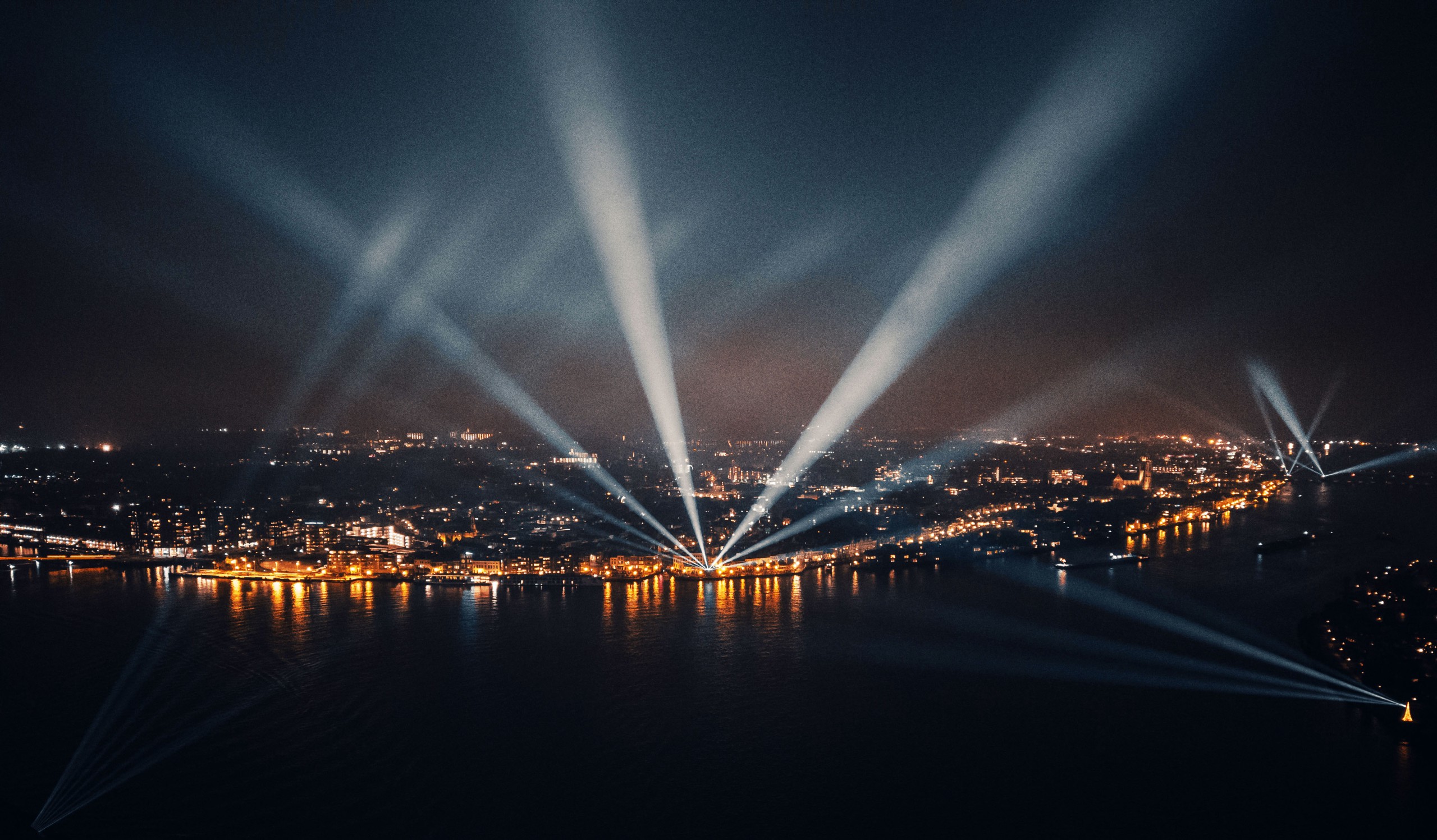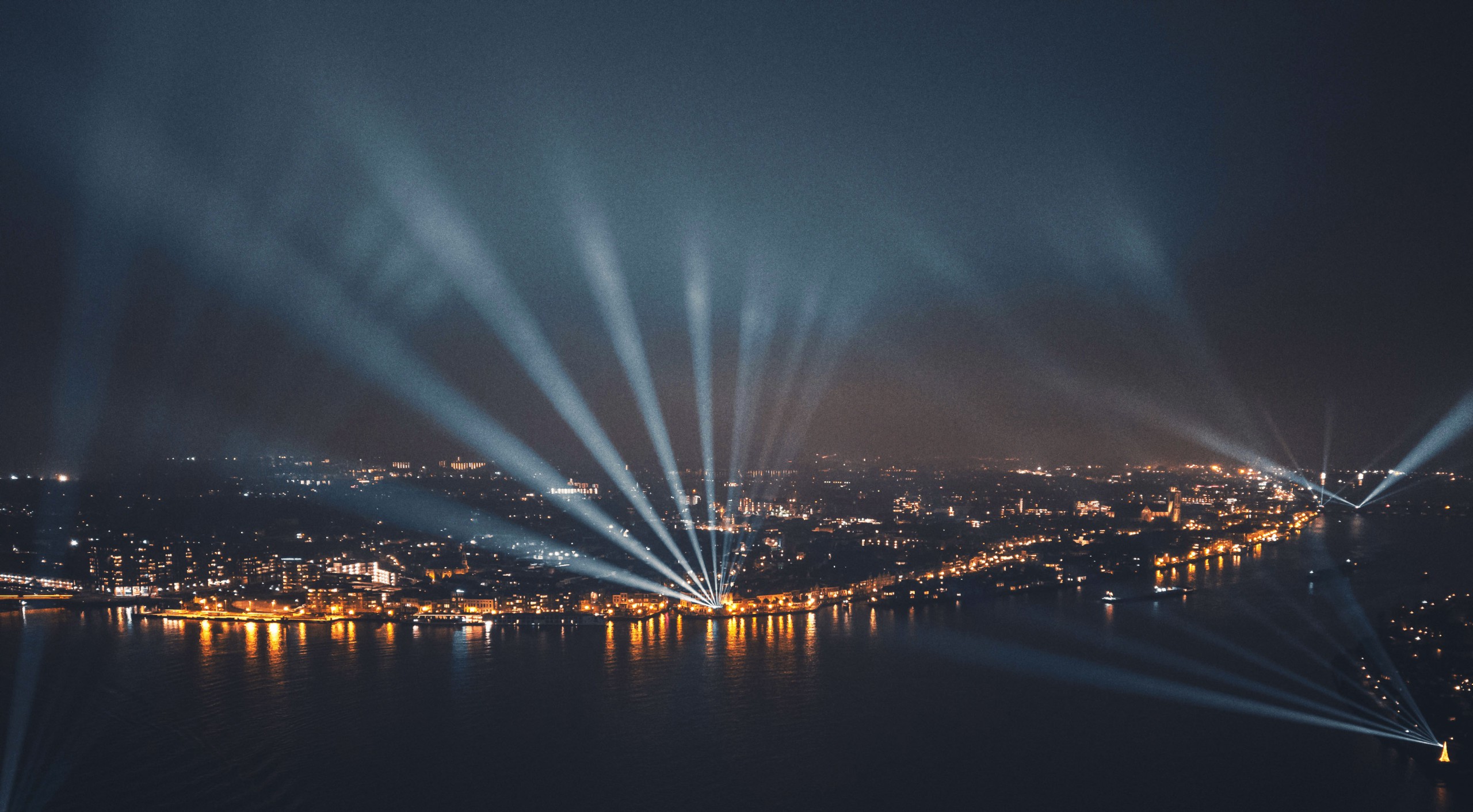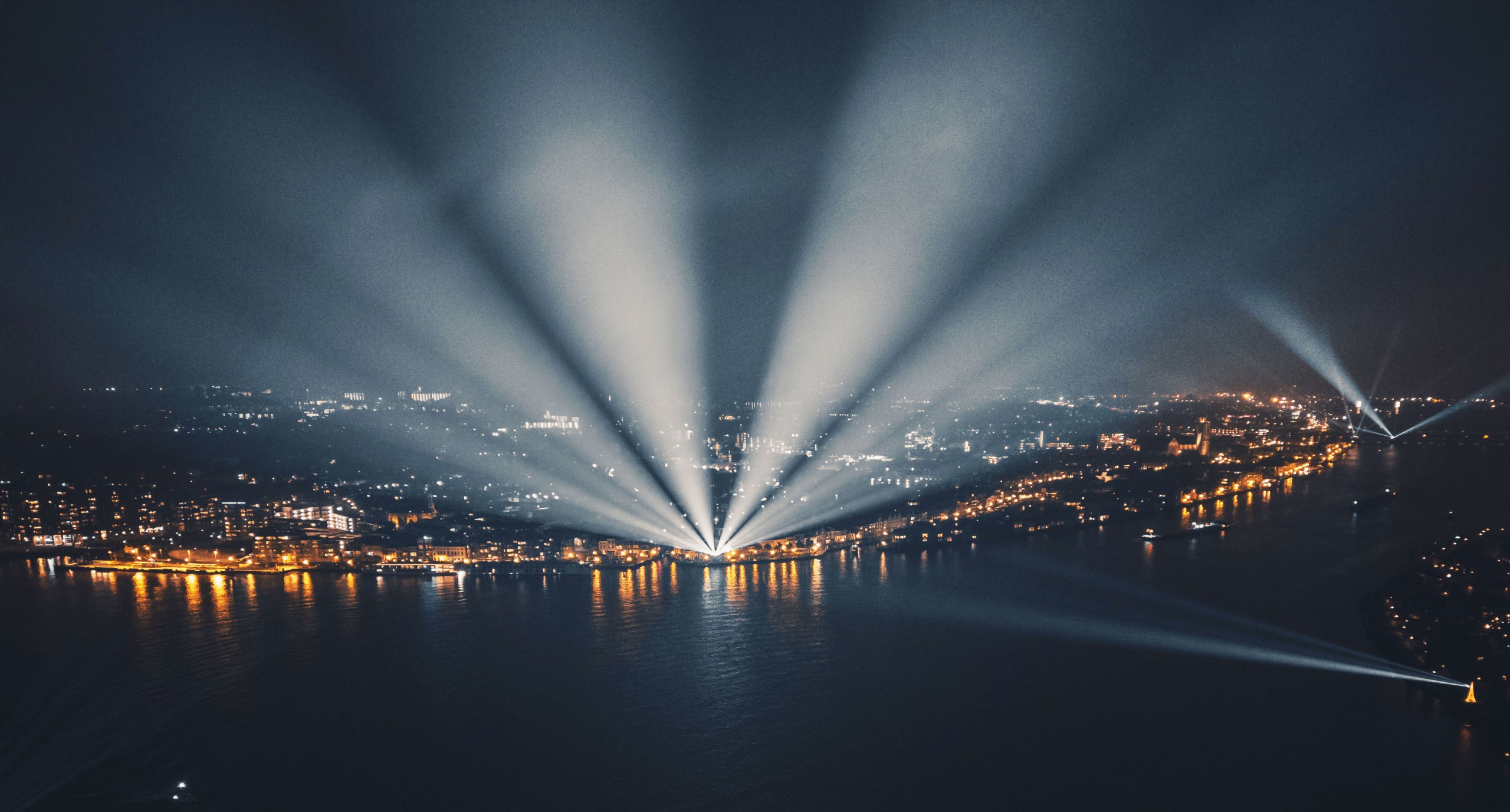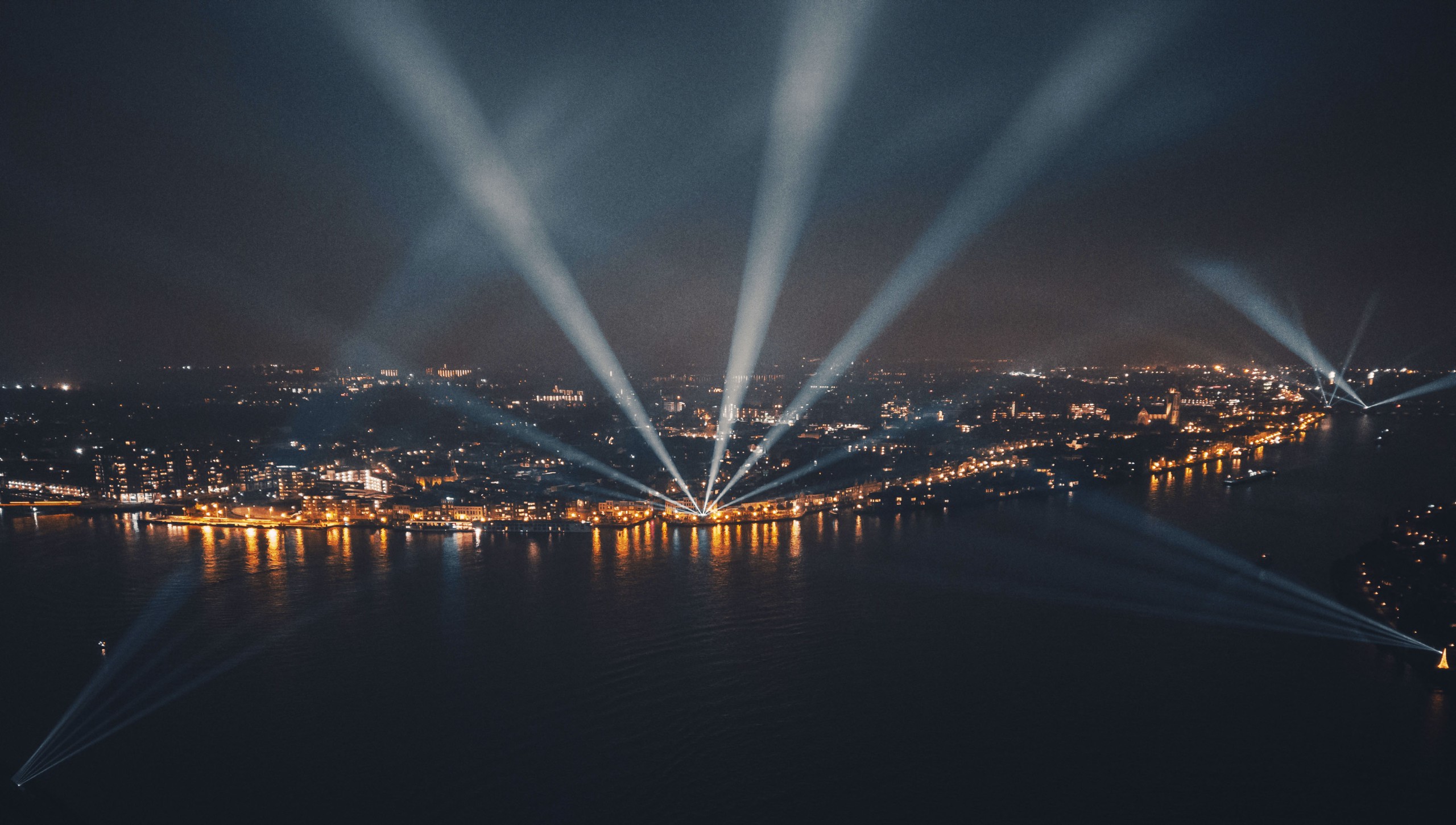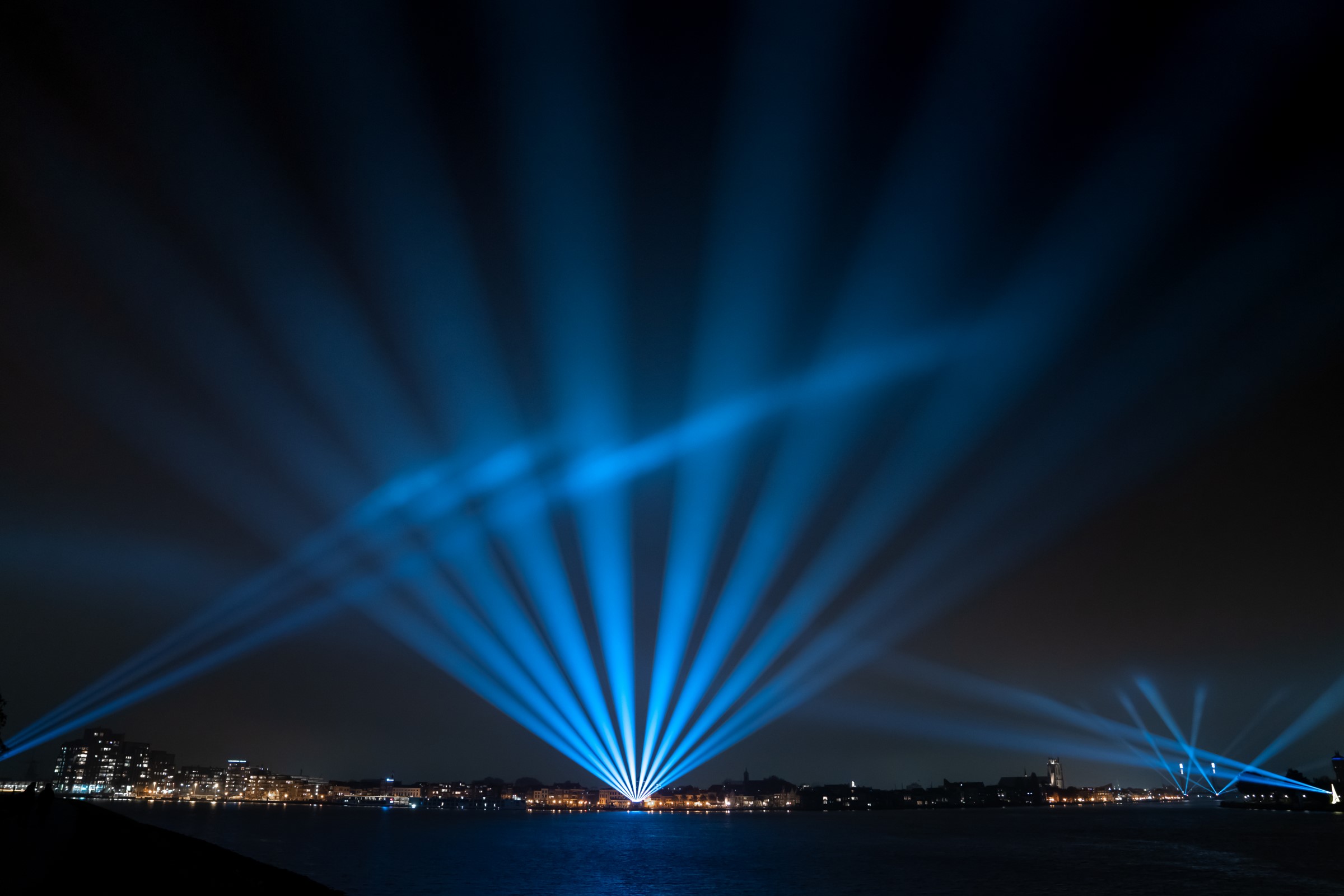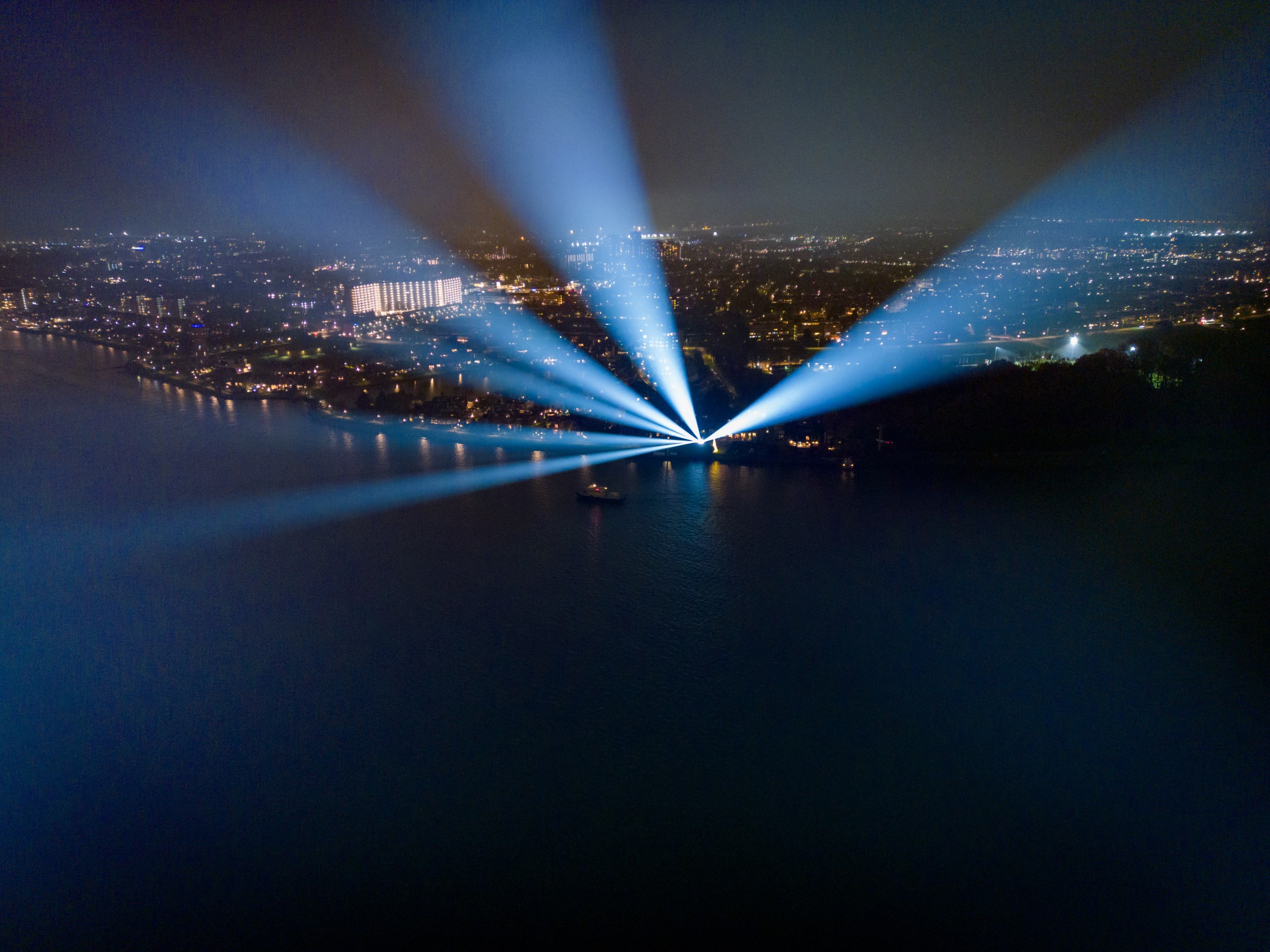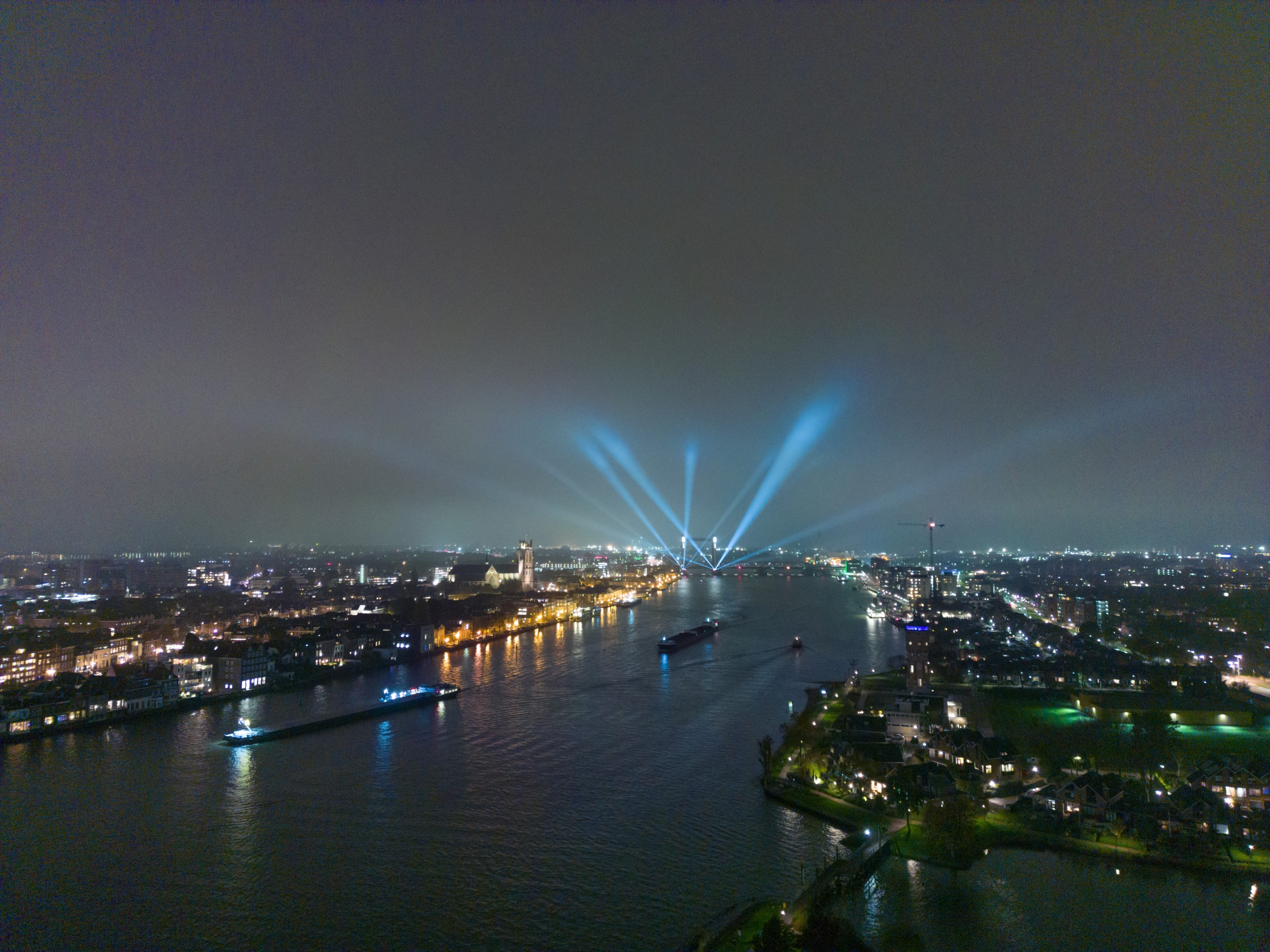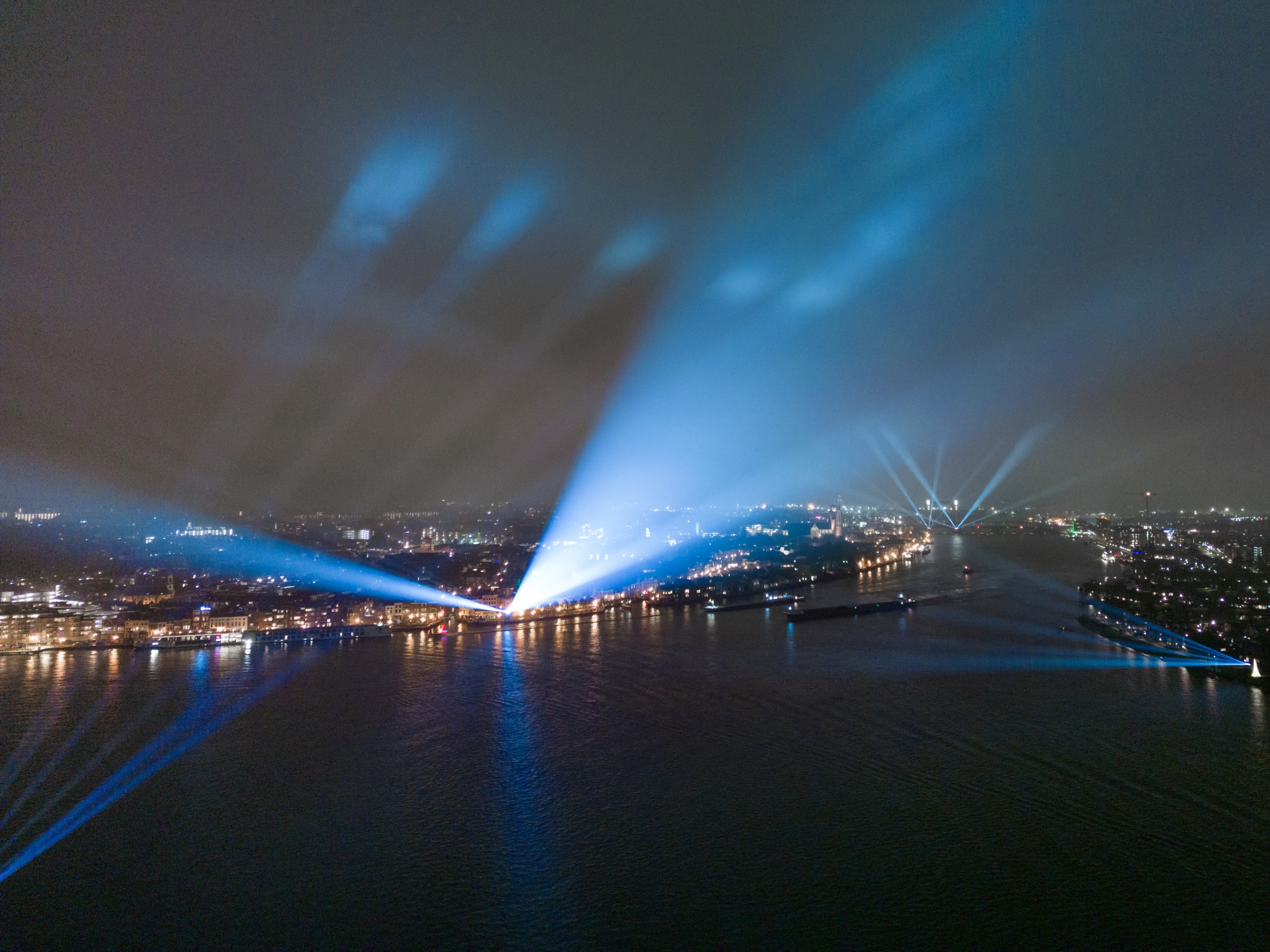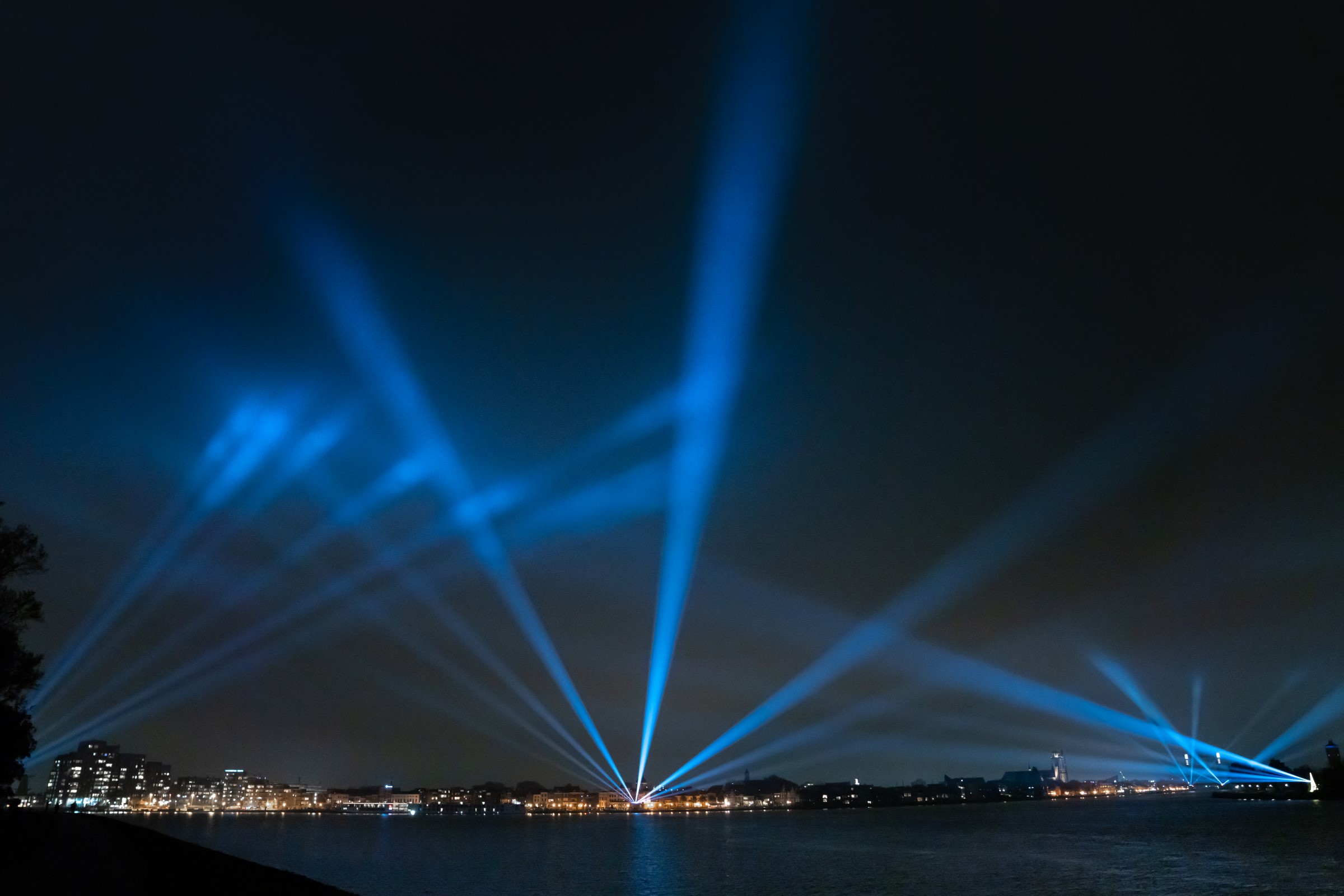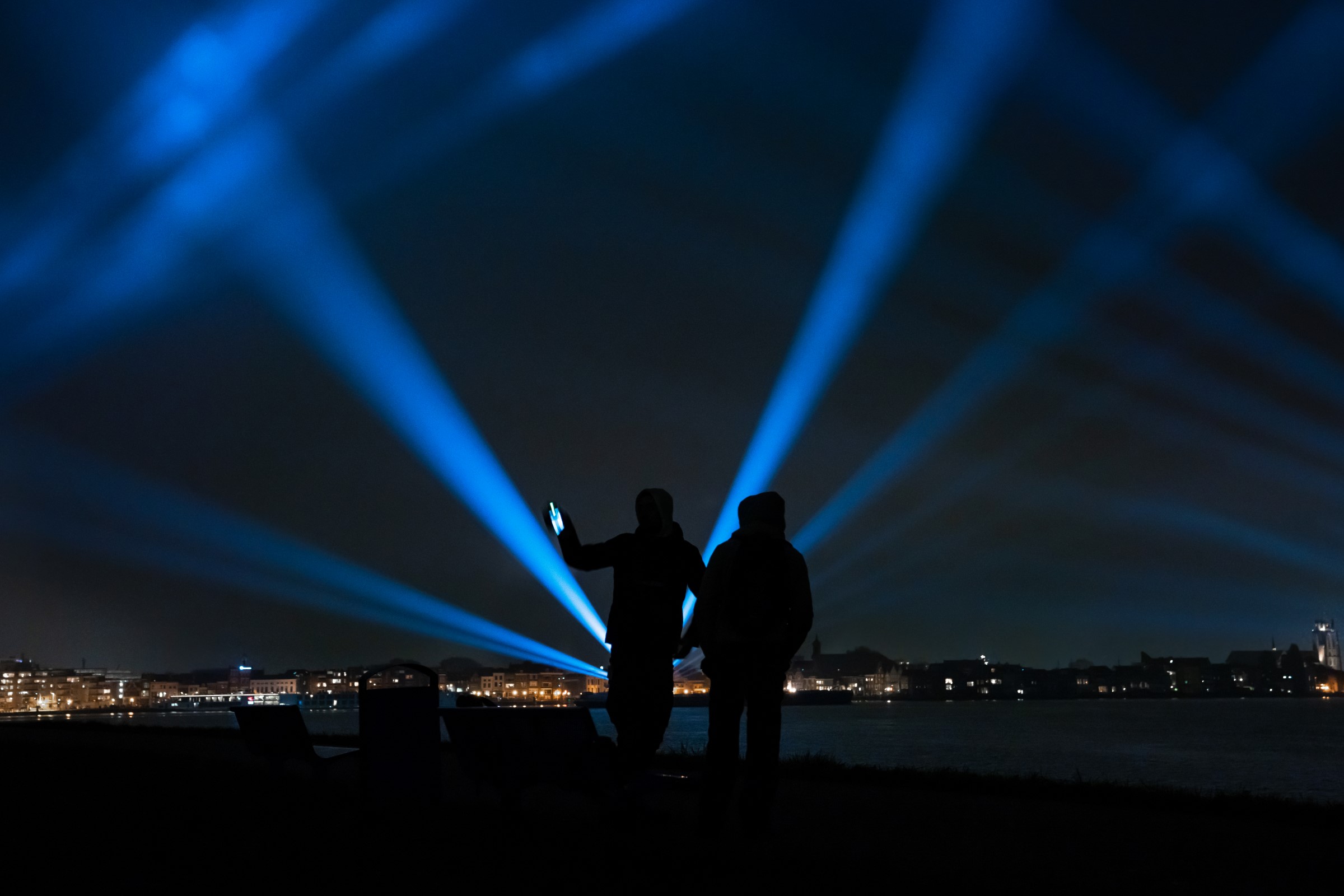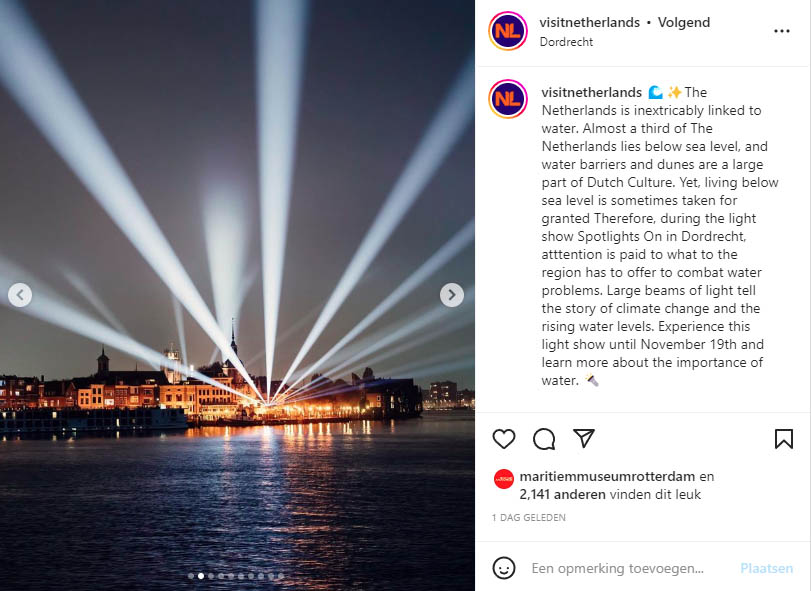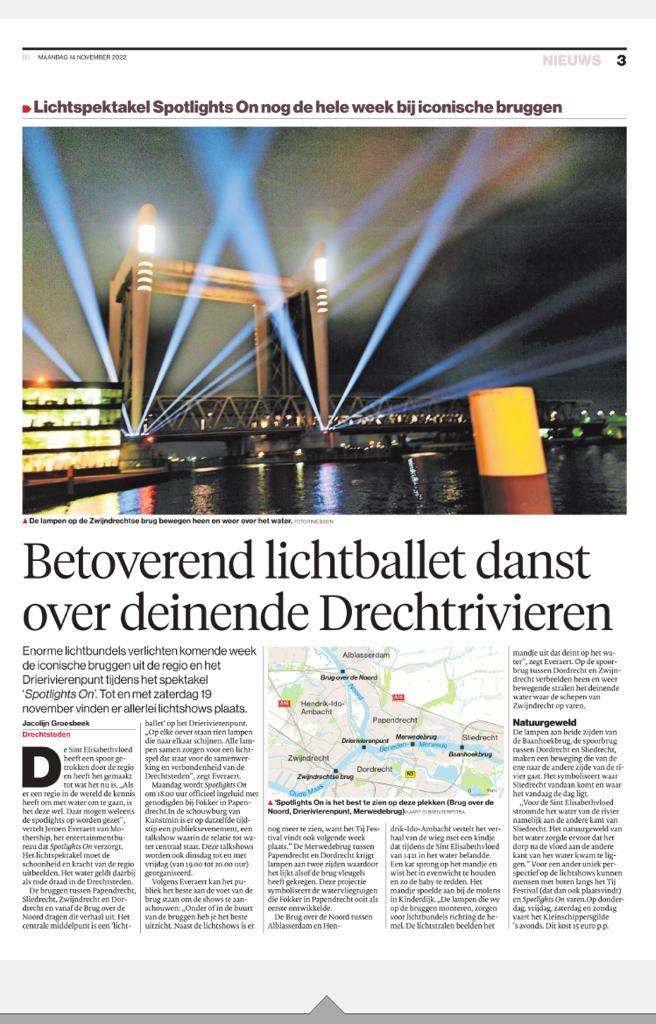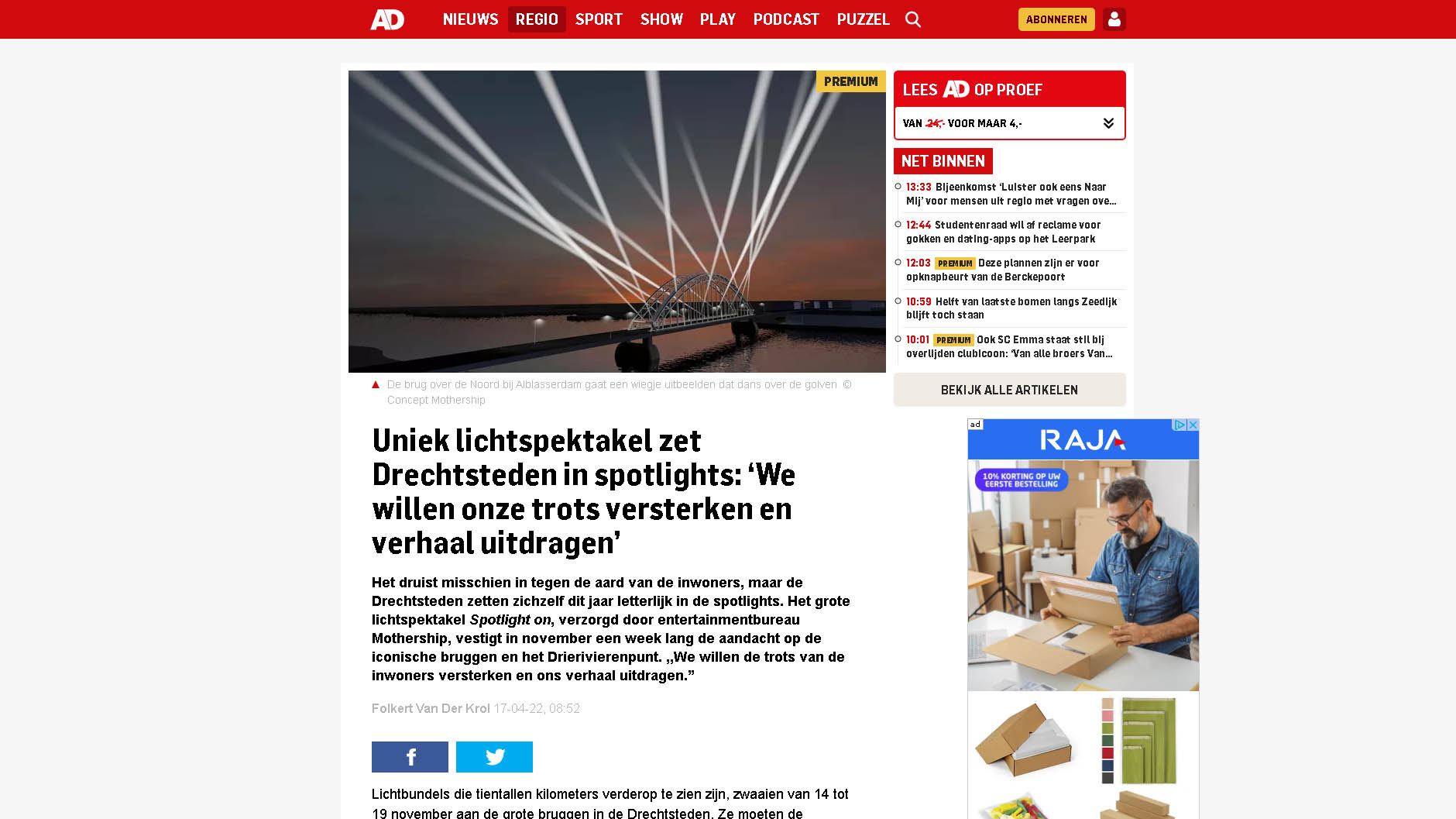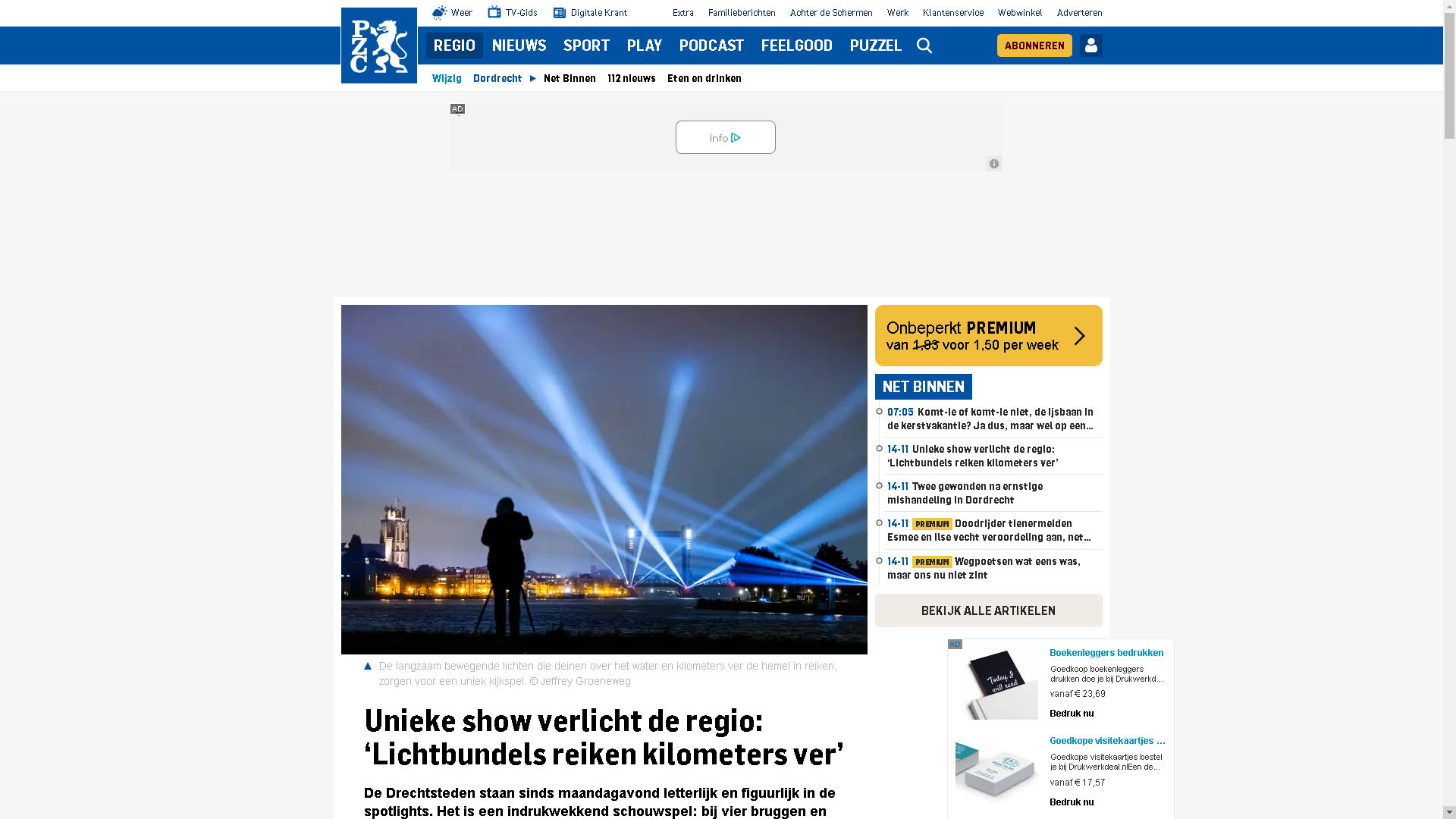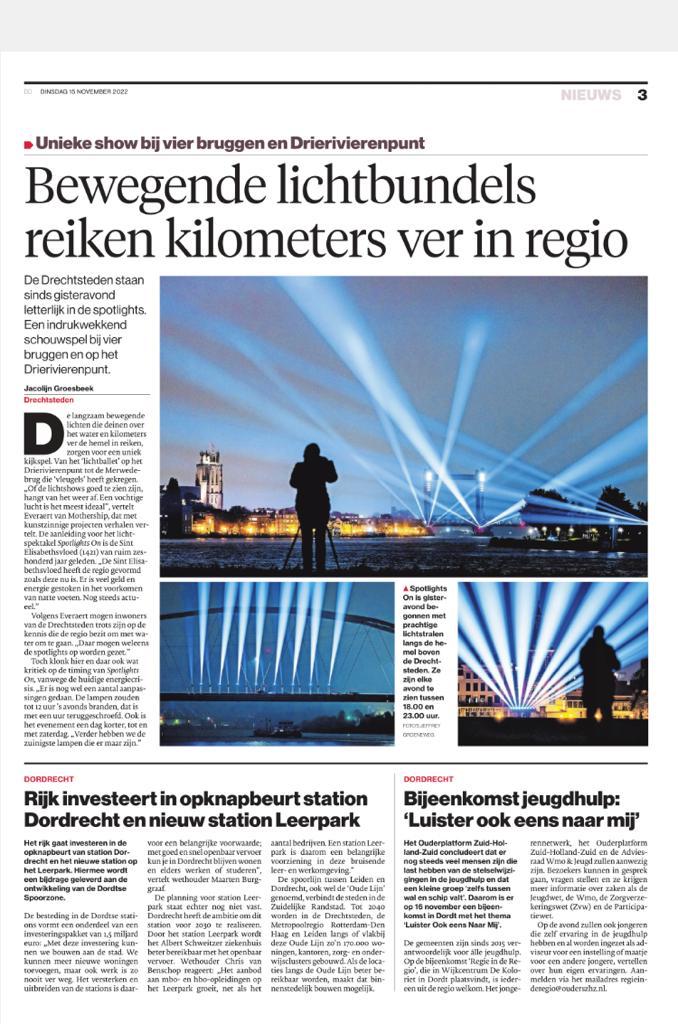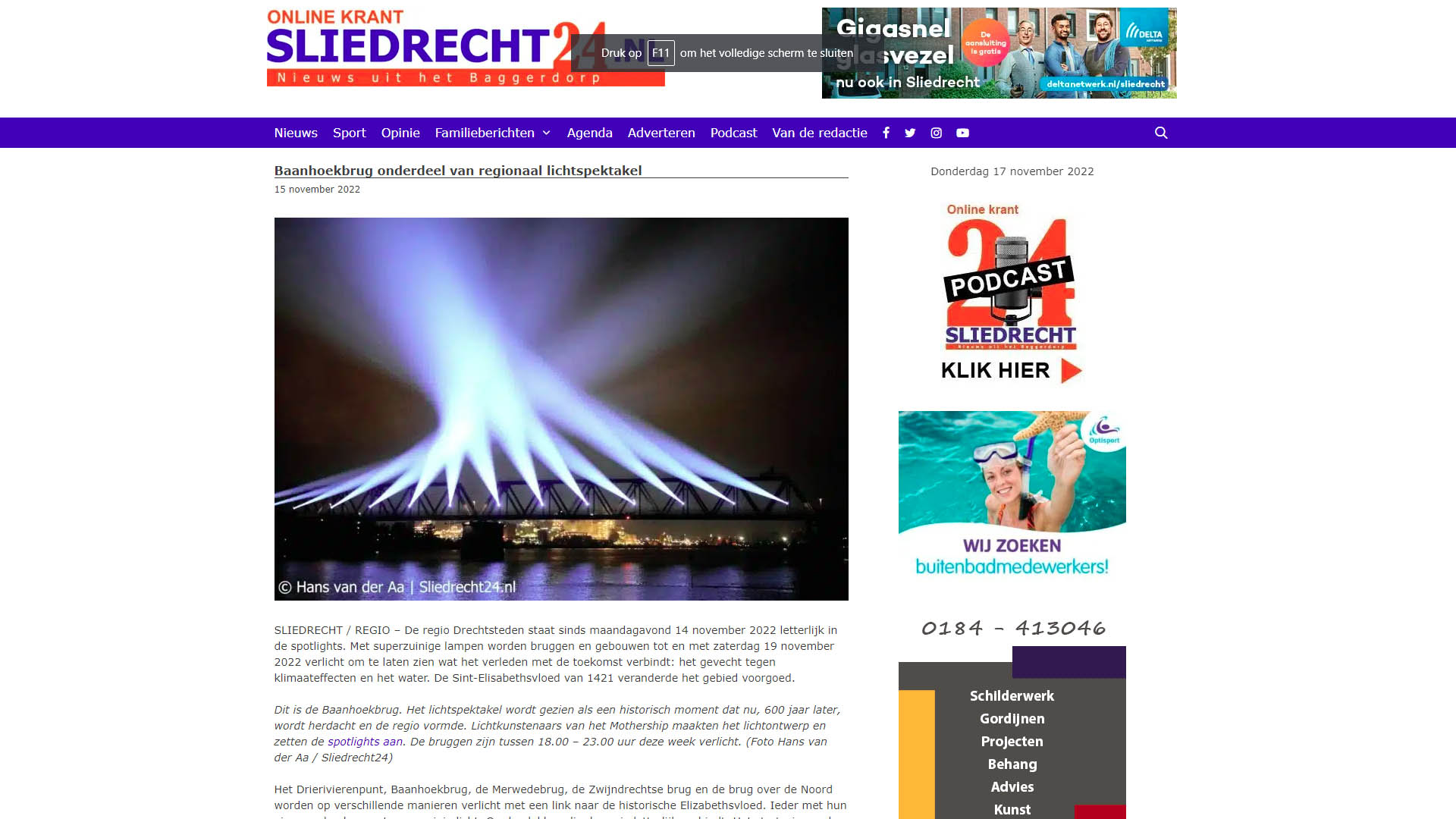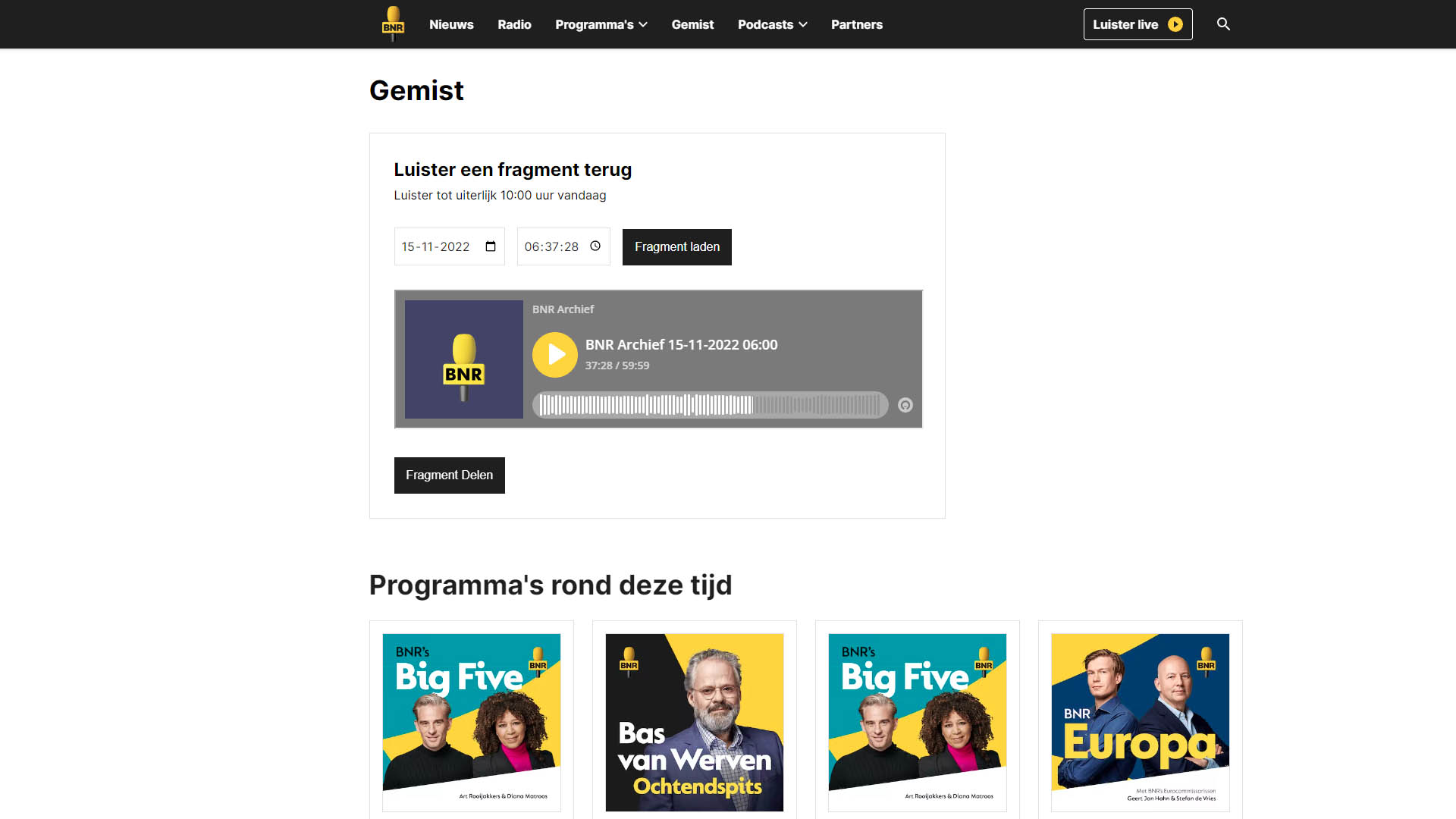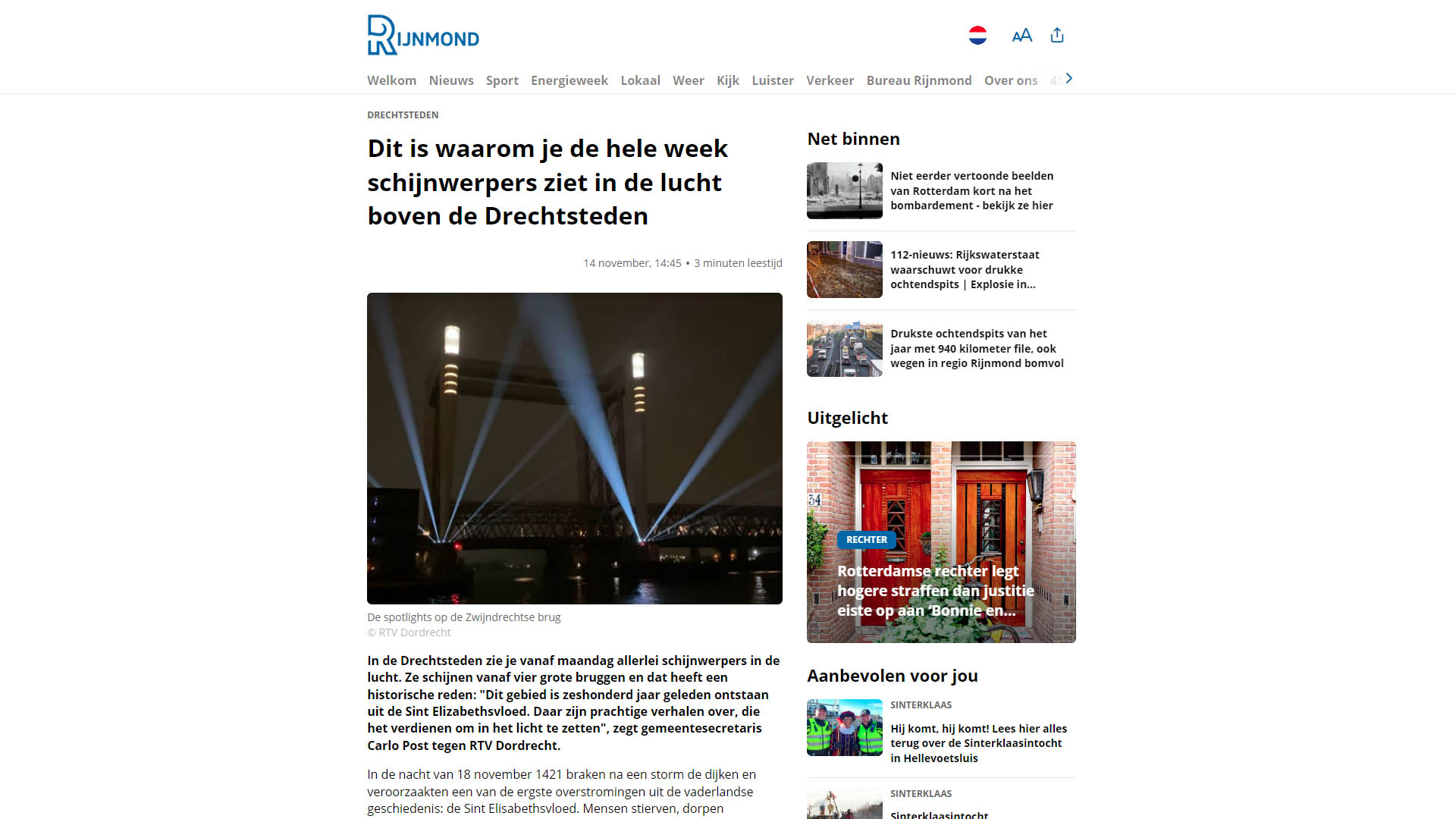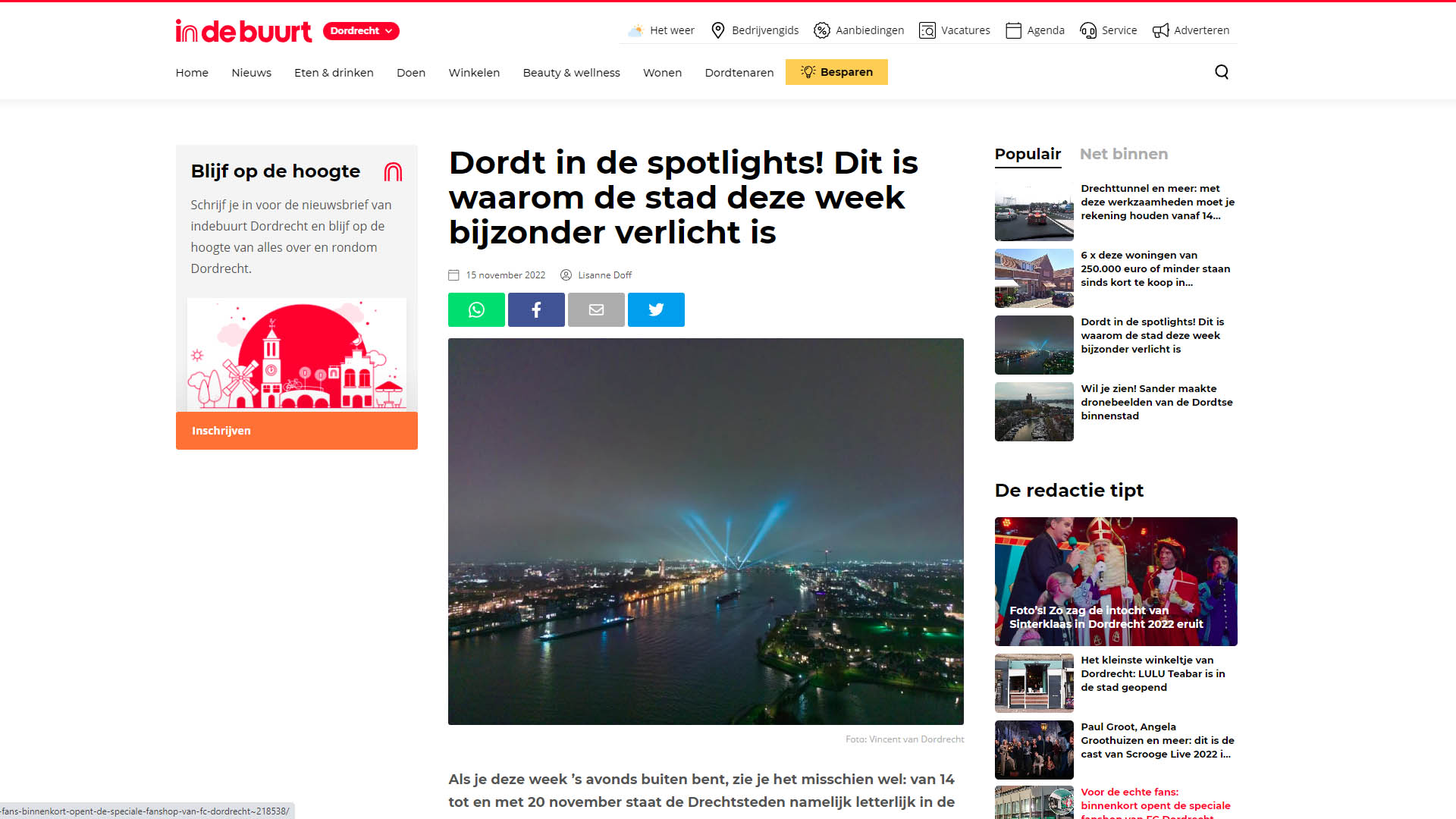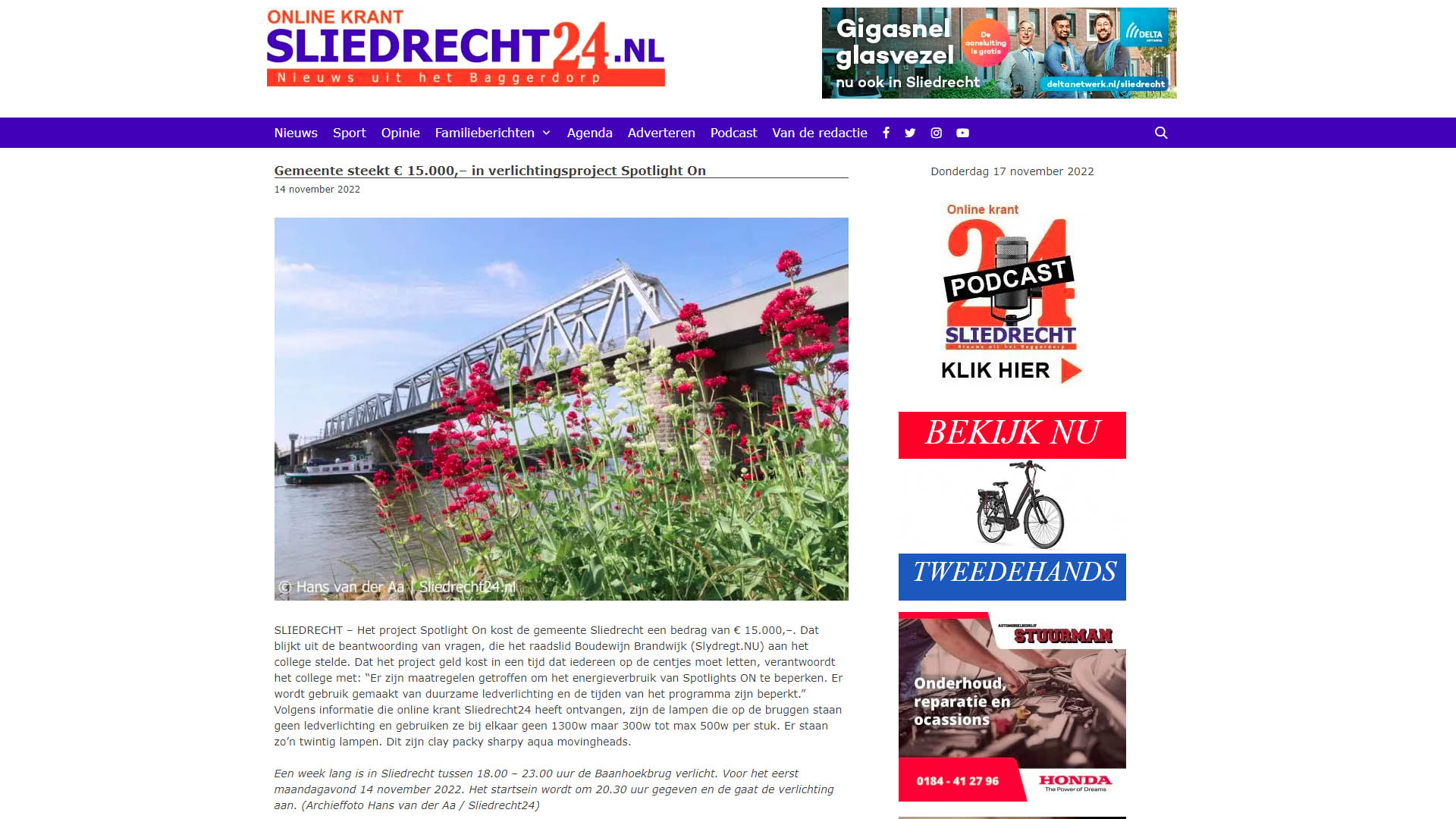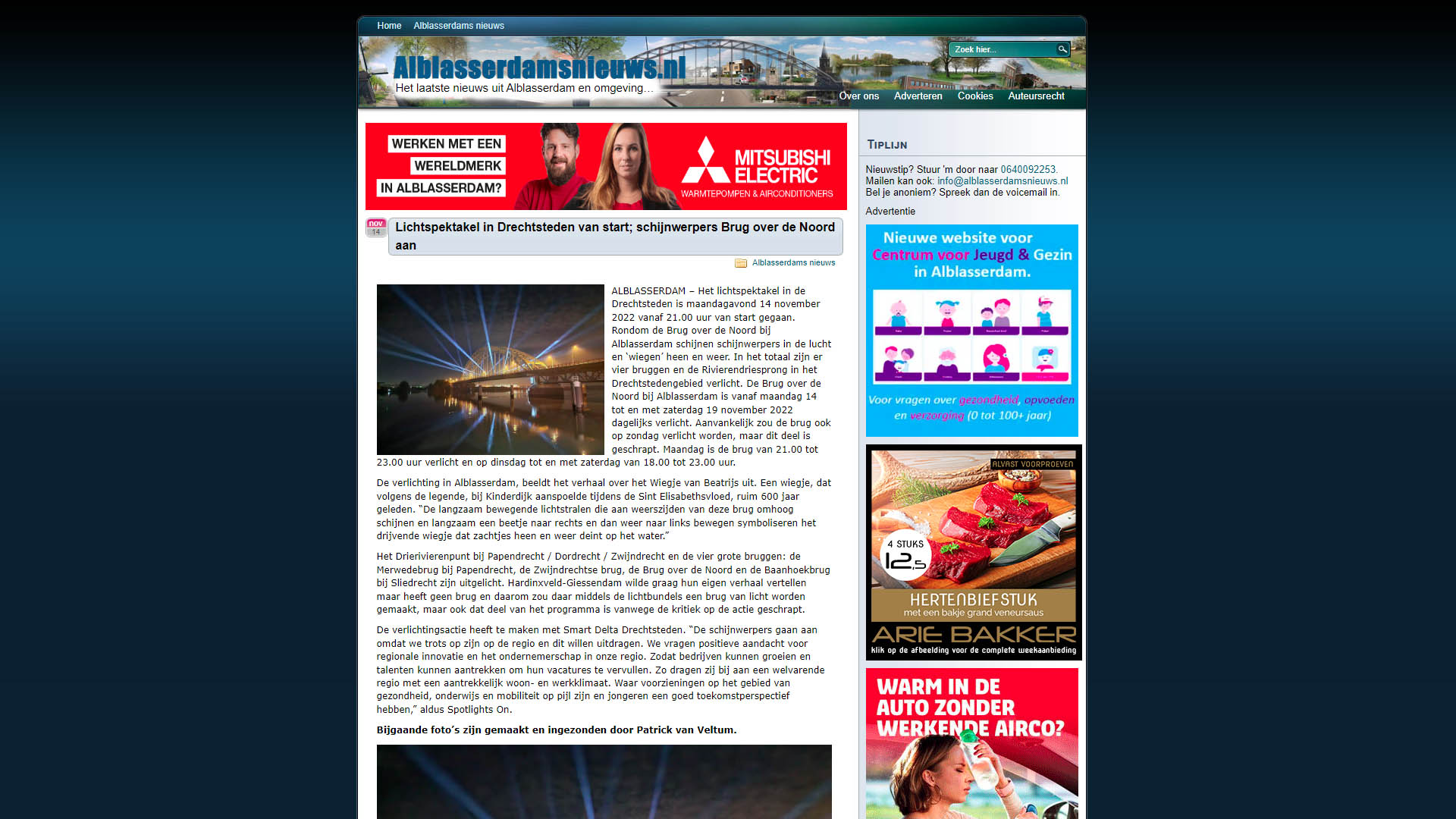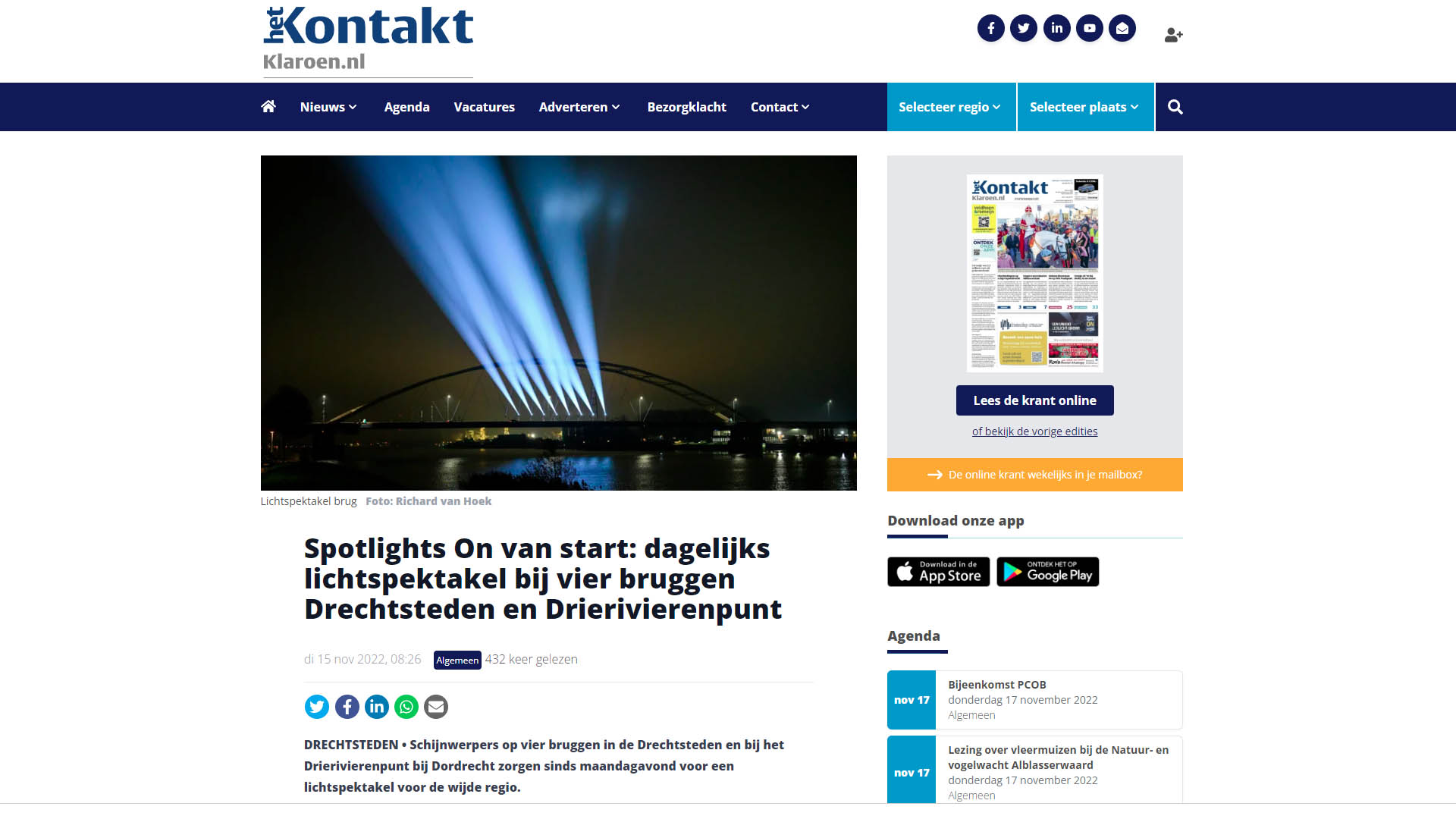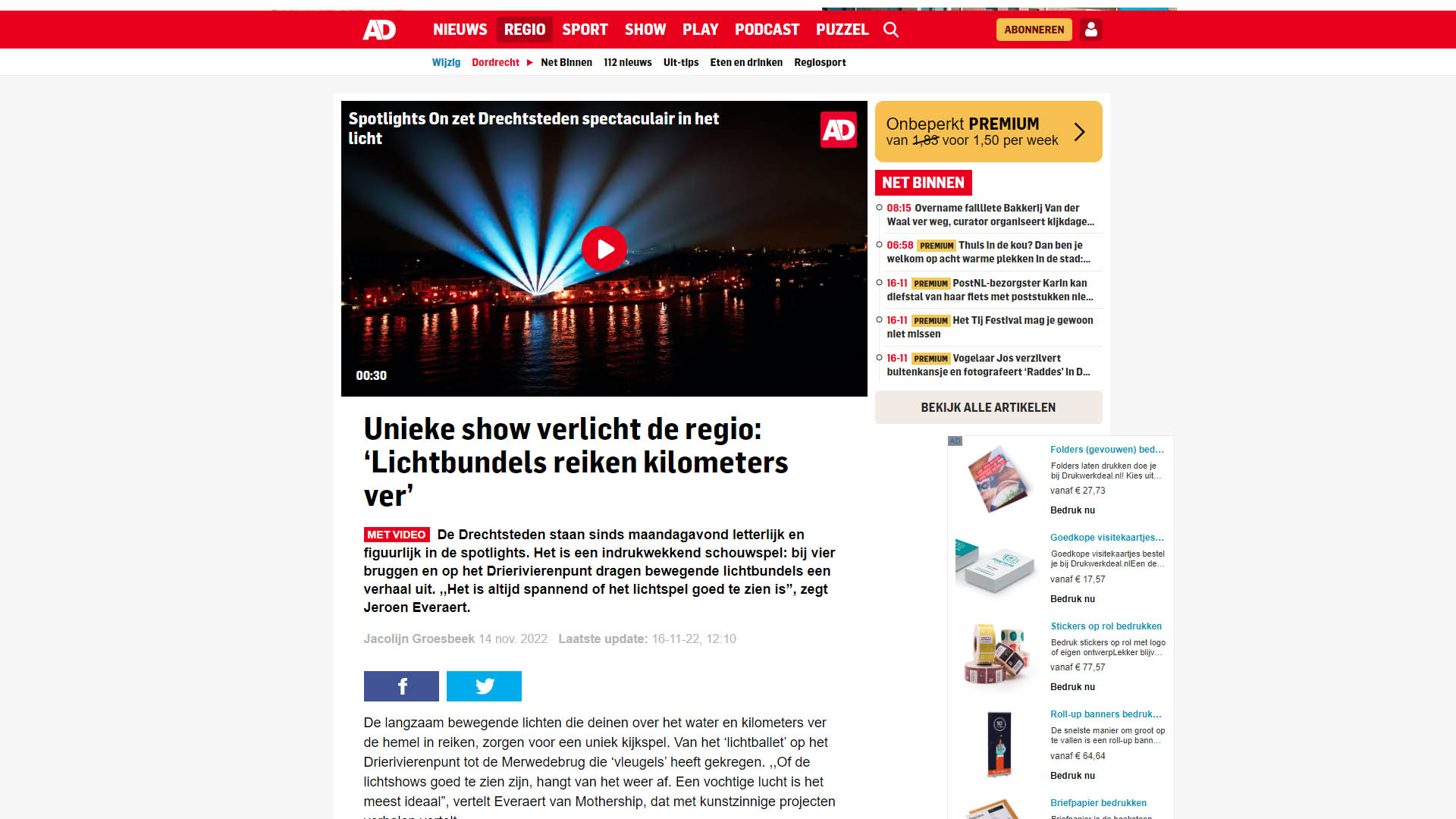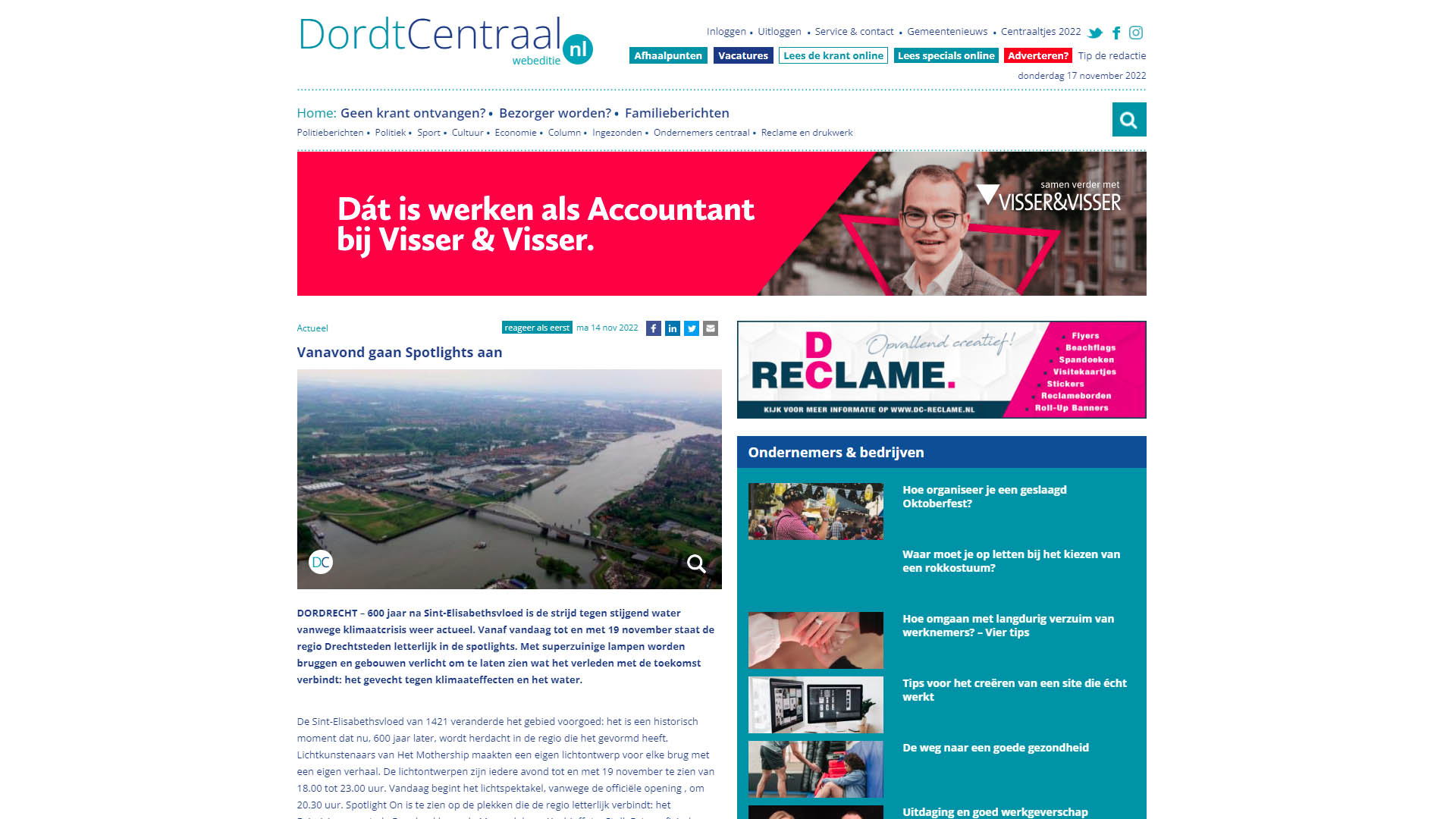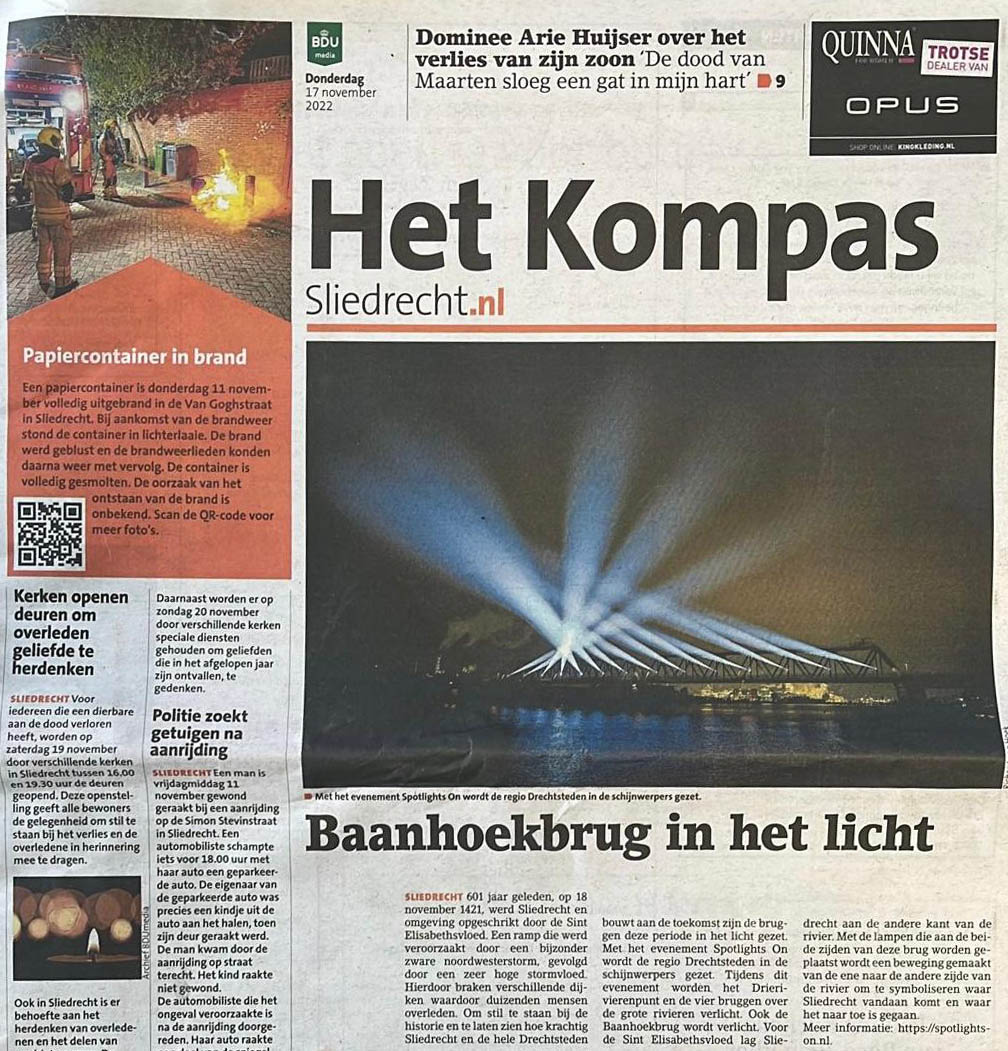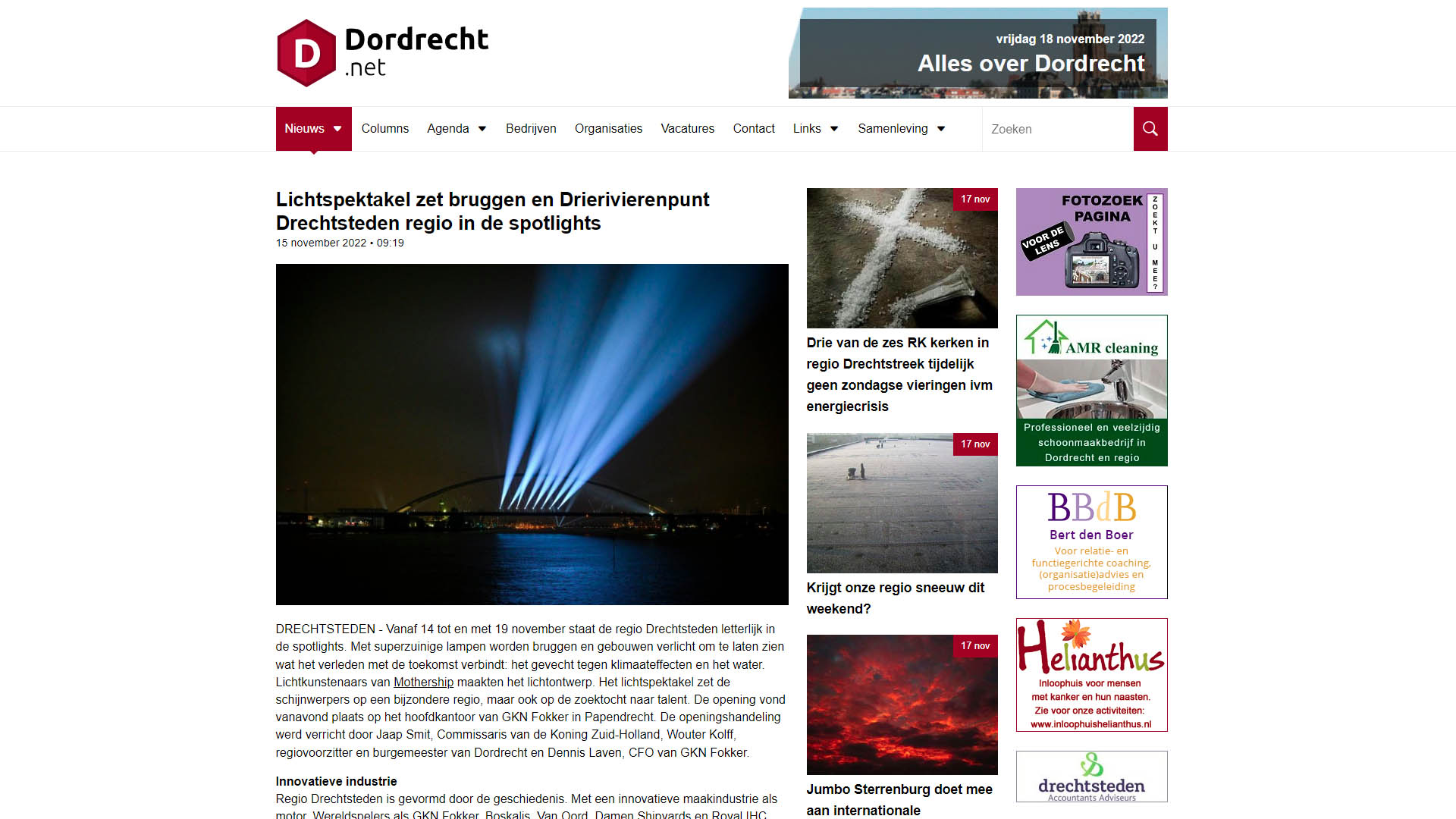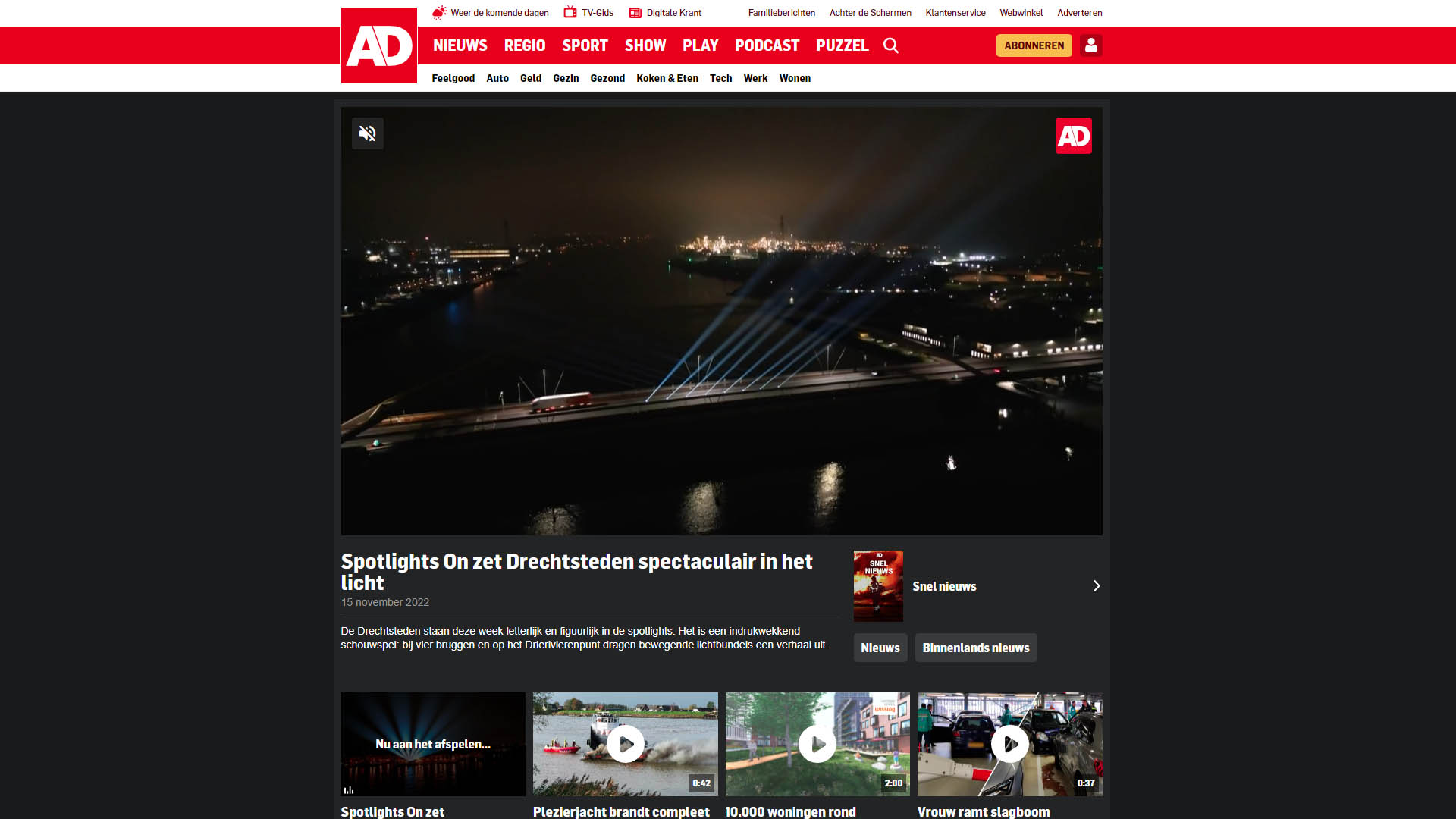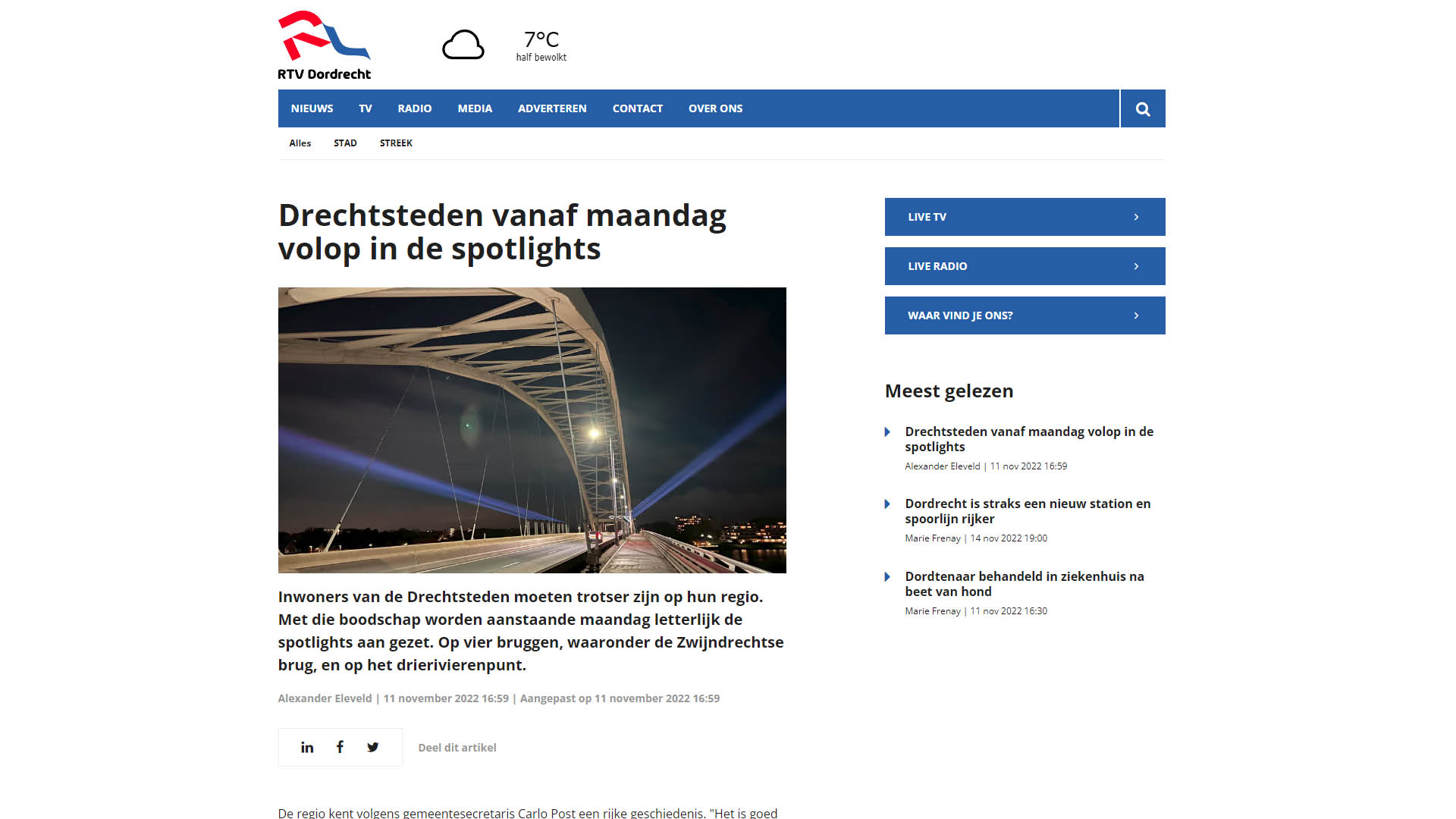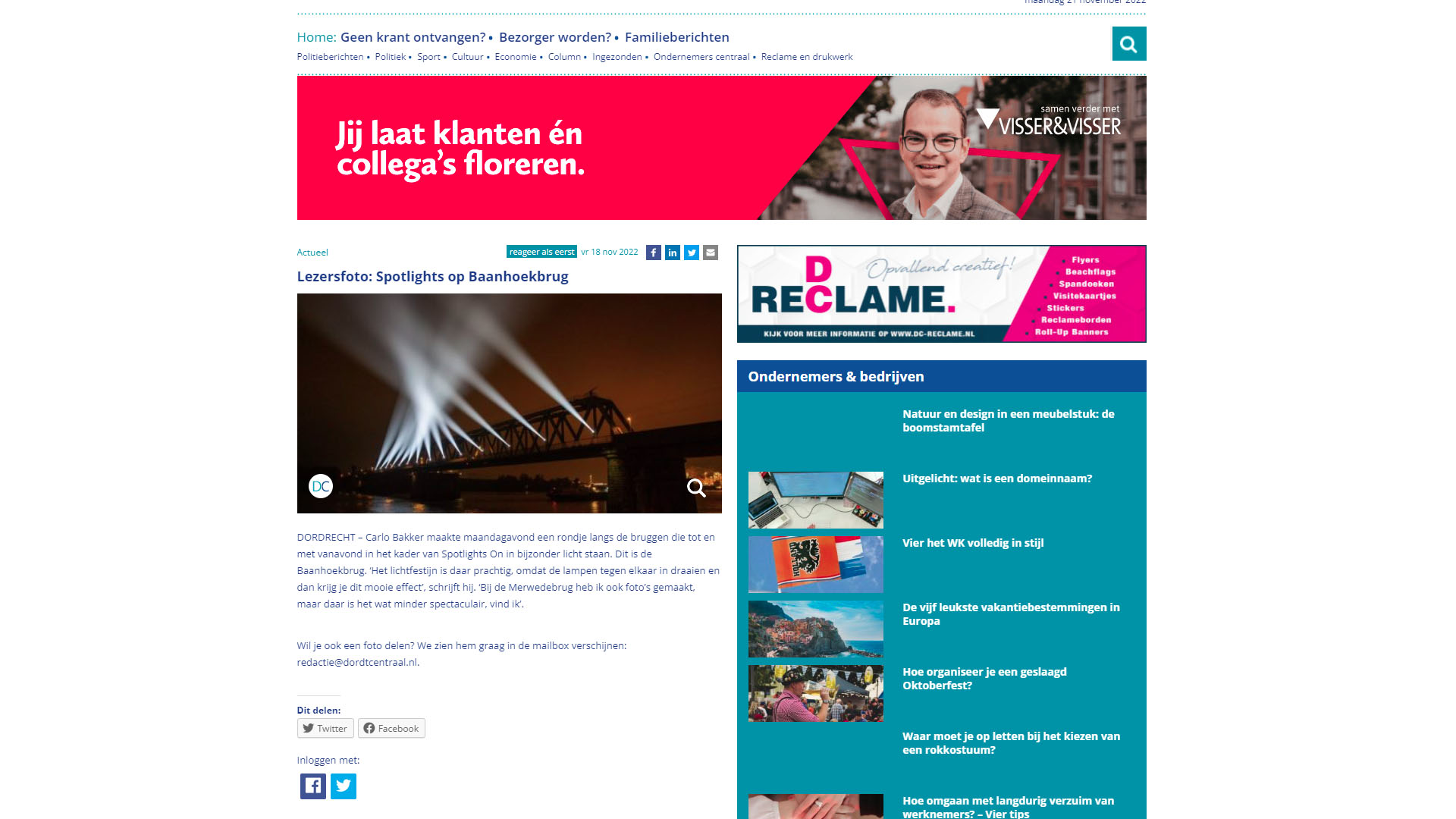In the media
Over six hundred years ago, the Sint Elisabethsvloed flooded Dordrecht. To commemorate this, four bridges in the region and the Drierivierenpunt were sensationally illuminated for almost a week with a fairy light show.
Huge beams of light waved from the locations below and could be seen from kilometres away. And each of which told its own story about that particular spot, about the beauty and strength of the region.
Drierivierenpunt
The concept behind the Drierivierenount is to showcase the cooperation between the different Drechtsteden. They need each other and strengthen each other.
Lamps had been placed on the three opposite banks of the Drierivierenpunt. On the bank in Dordrecht, the first lamp was switched on. This symbolised Dordrecht’s pioneering role.
This search lamp sought contact with the opposite banks, with Papendrecht and Zwijndrecht (and symbolically, of course, with the other municipalities that together formed the Drechtsteden), and there too, lamps came on successively. Then more and more lamps were added on each bank, seeking contact with each other. This eventually resulted in a fairy-like light show that symbolised the cooperation and connectedness of the Drechtsteden.
MERWEDEBRUG
In Papendrecht, Fokker once started developing aircraft starting from water. This resulted in seaplanes, which could take off from the water and also land on it. From this emerged a major aviation industry, which was hugely important for Papendrecht.
We gave this bridge wings, so to speak, with lights on two sides, so that it looked like it was flying.
ZWIJNDRECHT BRIDGE
Zwijndrecht is known as the city of inland navigation, of skippers, who live and work on and with the water.
Lights were placed on 1 side of the bridge on the 2 pillars whose moving beams symbolised the swaying water on which Zwijndrecht’s ships sail.
BRIDGE OVER THE NORTH
The story of Kinderdijk has parallels with the Bible story of Moses in the wicker basket.
During the flood, a baby in a wicker basket floated away. A cat jumped on the basket and balanced it, saving the baby. At the spot where the basket with the baby came ashore, Kinderdijk was formed.
The slowly moving rays of light that shone up on either side of this bridge and slowly moved a little to the right and then again to the left symbolised the floating cradle gently bobbing back and forth on the water.
BAANHOEKBRUG
Before the Elisabeth flood, Sliedrecht was on the other side of the river. The natural violence of the water meant that after the flood, the village was on the other side of the water.
With the lamps we placed on both sides of this bridge, we made a movement from one side of the river to the other to symbolise where Sliedrecht came from and where it went to.



